Interventions to prevent obesity in children aged 5 to 11 years old
- PMID: 38763517
- PMCID: PMC11102828
- DOI: 10.1002/14651858.CD015328.pub2
Interventions to prevent obesity in children aged 5 to 11 years old
Abstract
Background: Prevention of obesity in children is an international public health priority given the prevalence of the condition (and its significant impact on health, development and well-being). Interventions that aim to prevent obesity involve behavioural change strategies that promote healthy eating or 'activity' levels (physical activity, sedentary behaviour and/or sleep) or both, and work by reducing energy intake and/or increasing energy expenditure, respectively. There is uncertainty over which approaches are more effective and numerous new studies have been published over the last five years, since the previous version of this Cochrane review.
Objectives: To assess the effects of interventions that aim to prevent obesity in children by modifying dietary intake or 'activity' levels, or a combination of both, on changes in BMI, zBMI score and serious adverse events.
Search methods: We used standard, extensive Cochrane search methods. The latest search date was February 2023.
Selection criteria: Randomised controlled trials in children (mean age 5 years and above but less than 12 years), comparing diet or 'activity' interventions (or both) to prevent obesity with no intervention, usual care, or with another eligible intervention, in any setting. Studies had to measure outcomes at a minimum of 12 weeks post baseline. We excluded interventions designed primarily to improve sporting performance.
Data collection and analysis: We used standard Cochrane methods. Our outcomes were body mass index (BMI), zBMI score and serious adverse events, assessed at short- (12 weeks to < 9 months from baseline), medium- (9 months to < 15 months) and long-term (≥ 15 months) follow-up. We used GRADE to assess the certainty of the evidence for each outcome.
Main results: This review includes 172 studies (189,707 participants); 149 studies (160,267 participants) were included in meta-analyses. One hundred forty-six studies were based in high-income countries. The main setting for intervention delivery was schools (111 studies), followed by the community (15 studies), the home (eight studies) and a clinical setting (seven studies); one intervention was conducted by telehealth and 31 studies were conducted in more than one setting. Eighty-six interventions were implemented for less than nine months; the shortest was conducted over one visit and the longest over four years. Non-industry funding was declared by 132 studies; 24 studies were funded in part or wholly by industry. Dietary interventions versus control Dietary interventions, compared with control, may have little to no effect on BMI at short-term follow-up (mean difference (MD) 0, 95% confidence interval (CI) -0.10 to 0.10; 5 studies, 2107 participants; low-certainty evidence) and at medium-term follow-up (MD -0.01, 95% CI -0.15 to 0.12; 9 studies, 6815 participants; low-certainty evidence) or zBMI at long-term follow-up (MD -0.05, 95% CI -0.10 to 0.01; 7 studies, 5285 participants; low-certainty evidence). Dietary interventions, compared with control, probably have little to no effect on BMI at long-term follow-up (MD -0.17, 95% CI -0.48 to 0.13; 2 studies, 945 participants; moderate-certainty evidence) and zBMI at short- or medium-term follow-up (MD -0.06, 95% CI -0.13 to 0.01; 8 studies, 3695 participants; MD -0.04, 95% CI -0.10 to 0.02; 9 studies, 7048 participants; moderate-certainty evidence). Five studies (1913 participants; very low-certainty evidence) reported data on serious adverse events: one reported serious adverse events (e.g. allergy, behavioural problems and abdominal discomfort) that may have occurred as a result of the intervention; four reported no effect. Activity interventions versus control Activity interventions, compared with control, may have little to no effect on BMI and zBMI at short-term or long-term follow-up (BMI short-term: MD -0.02, 95% CI -0.17 to 0.13; 14 studies, 4069 participants; zBMI short-term: MD -0.02, 95% CI -0.07 to 0.02; 6 studies, 3580 participants; low-certainty evidence; BMI long-term: MD -0.07, 95% CI -0.24 to 0.10; 8 studies, 8302 participants; zBMI long-term: MD -0.02, 95% CI -0.09 to 0.04; 6 studies, 6940 participants; low-certainty evidence). Activity interventions likely result in a slight reduction of BMI and zBMI at medium-term follow-up (BMI: MD -0.11, 95% CI -0.18 to -0.05; 16 studies, 21,286 participants; zBMI: MD -0.05, 95% CI -0.09 to -0.02; 13 studies, 20,600 participants; moderate-certainty evidence). Eleven studies (21,278 participants; low-certainty evidence) reported data on serious adverse events; one study reported two minor ankle sprains and one study reported the incident rate of adverse events (e.g. musculoskeletal injuries) that may have occurred as a result of the intervention; nine studies reported no effect. Dietary and activity interventions versus control Dietary and activity interventions, compared with control, may result in a slight reduction in BMI and zBMI at short-term follow-up (BMI: MD -0.11, 95% CI -0.21 to -0.01; 27 studies, 16,066 participants; zBMI: MD -0.03, 95% CI -0.06 to 0.00; 26 studies, 12,784 participants; low-certainty evidence) and likely result in a reduction of BMI and zBMI at medium-term follow-up (BMI: MD -0.11, 95% CI -0.21 to 0.00; 21 studies, 17,547 participants; zBMI: MD -0.05, 95% CI -0.07 to -0.02; 24 studies, 20,998 participants; moderate-certainty evidence). Dietary and activity interventions compared with control may result in little to no difference in BMI and zBMI at long-term follow-up (BMI: MD 0.03, 95% CI -0.11 to 0.16; 16 studies, 22,098 participants; zBMI: MD -0.02, 95% CI -0.06 to 0.01; 22 studies, 23,594 participants; low-certainty evidence). Nineteen studies (27,882 participants; low-certainty evidence) reported data on serious adverse events: four studies reported occurrence of serious adverse events (e.g. injuries, low levels of extreme dieting behaviour); 15 studies reported no effect. Heterogeneity was apparent in the results for all outcomes at the three follow-up times, which could not be explained by the main setting of the interventions (school, home, school and home, other), country income status (high-income versus non-high-income), participants' socioeconomic status (low versus mixed) and duration of the intervention. Most studies excluded children with a mental or physical disability.
Authors' conclusions: The body of evidence in this review demonstrates that a range of school-based 'activity' interventions, alone or in combination with dietary interventions, may have a modest beneficial effect on obesity in childhood at short- and medium-term, but not at long-term follow-up. Dietary interventions alone may result in little to no difference. Limited evidence of low quality was identified on the effect of dietary and/or activity interventions on severe adverse events and health inequalities; exploratory analyses of these data suggest no meaningful impact. We identified a dearth of evidence for home and community-based settings (e.g. delivered through local youth groups), for children living with disabilities and indicators of health inequities.
Copyright © 2024 The Authors. Cochrane Database of Systematic Reviews published by John Wiley & Sons, Ltd. on behalf of The Cochrane Collaboration.
Conflict of interest statement
Francesca Spiga: declares that they have no conflict of interest.Eve Tomlinson: declares that they have no conflict of interest.Annabel Davies: declares that they have no conflict of interest.Theresa HM Moore: reports being employed by Cochrane as a Methodology Editor, and was not part of the peer review process for this review. The author was not involved in the editorial process.Katie Breheny : receives support from the National Institute for Health Research(NIHR) Applied Research Collaboration ARC West and Alzheimer’s Society and is funded through a Post‐Doctoral Fellowship. Previously, Katie Breheny received support from the NIHR School for Public Health Research (SPHR) through a Post‐Doctoral Launching Fellowship. KB was involved in Breheny 2020: Effectiveness and cost‐effectiveness of the Daily Mile. This was funded by an NIHR Career Development Fellowship (awarded to Professor Emma Frew) and Birmingham City Council, through a Section 106 agreement. Neither the NIHR Academy nor Birmingham City Council had any role in this review, and Katie Breheny was not involved in assessing its eligibility, extracting data or assessing the risk of bias or GRADE for Breheny 2020.Sarah Dawson: reports being employed by Cochrane as an Information Specialist (Common Mental Disorders Group). The author was not involved in the editorial process.Jelena Savovic: reports being a Cochrane member. Cochrane has published previous reviews on this topic. JS has received payment from Core Models Ltd. in 2021 to deliver online teaching of introductory systematic review methods.Yang Gao: declares that they have no conflict of interest.Sophie M Phillips: declares that they have no conflict of interest.Frances Hillier‐Brown: declares that they have no conflict of interest.Rebecca K Hodder: reports working as a Program Manager, Hunter New England Population Health, Hunter New England Local Health District, responsible for the delivery of chronic disease prevention programmes in secondary schools. RKH works as a research associate for Cochrane Public Health and had no role in the editorial process for the review.Luke Wolfenden: reports research grants to undertake trials likely to be included in the review; paid to University of Newcastle. LW reports that he benefited financially from these payments and/or has access to or control of the funds. LW reports involvement in conducting one study included in the work: Barnes 2021. LW was not involved in decisions regarding study selection, data extraction, assessment of risk of bias or grading of the certainty of the evidence (GRADE) for this study. LW has received funding, via grants awarded to his institution, for his time to undertake research, and to conduct research trials including activities from study development, conduct, analysis and reporting from NSW Ministry of Health, Nib Foundation, Heart Foundation and National Health and Medical Research Council. LW reports that he has published numerous opinions, commentary or editorials on topics pertaining to chronic disease prevention, healthy eating, physical activity and obesity. LW reports working as a health promotion programme manager at Hunter New England Local Health District, a government‐funded health service. LW is Co‐ordinating Editor of Cochrane Public Health; however, he was not involved in any stage of the editorial management or assessment of this review.Julian PT Higgins: receives support from the National Institute for Health Research (Public Health Research, NIHR131572).Carolyn D Summerbell: reports being affiliated with the WHO, and contributed to their work for their 'Ending Childhood Obesity' report.
Figures
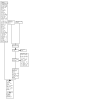




































































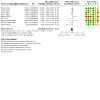

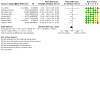
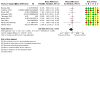
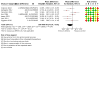
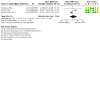

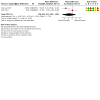
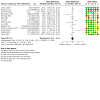
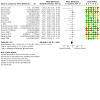
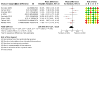
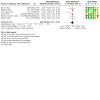
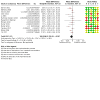
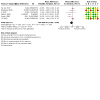
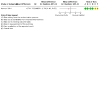
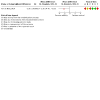
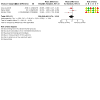
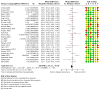
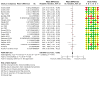
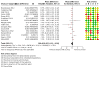
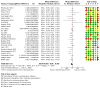
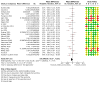
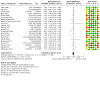
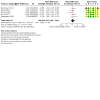
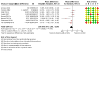
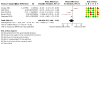
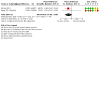
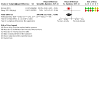
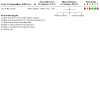
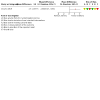
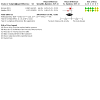
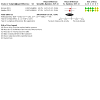
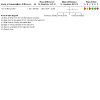
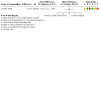
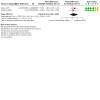
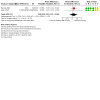
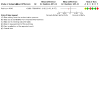
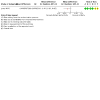
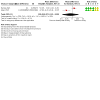



Update of
- doi: 10.1002/14651858.CD015328
References
References to studies included in this review
Adab 2018 {published data only}
-
- Adab P, Barrett T, Bhopal R, Cade JE, Canaway A, Cheng KK, et al. The West Midlands ActiVe lifestyle and healthy Eating in School children (WAVES) study: a cluster randomised controlled trial testing the clinical effectiveness and cost-effectiveness of a multifaceted obesity prevention intervention programme targeted at children aged 6-7 years. Health Technology Assessment (Winchester, England) 2018;22(8):1-608. [DOI: 10.3310/hta22080] - DOI - PMC - PubMed
-
- Adab P, Pallan MJ, Lancashire ER, Hemming K, Frew E, Barrett T, et al. Erratum: Effectiveness of a childhood obesity prevention programme delivered through schools, targeting 6 and 7 year olds: Cluster randomised controlled trial (WAVES study) (BMJ (Online) (2018) 360 (k211) DOI: 10.1136/bmj.k211). BMJ 2018;361:(no pagination). [DOI: 10.1136/bmj.k1954] - DOI - PMC - PubMed
-
- Adab P, Pallan MJ, Lancashire ER, Hemming K, Frew E, Griffin T, et al. A cluster-randomised controlled trial to assess the effectiveness and cost-effectiveness of a childhood obesity prevention programme delivered through schools, targeting 6–7 year old children: the WAVES study protocol. BMC Public Health 2015;15:488. [DOI: 10.1186/s12889-015-1800-8] - DOI - PMC - PubMed
-
- Canaway A, Frew E, Lancashire E, Pallan M, Hemming K, Adab P, et al. Economic evaluation of a childhood obesity prevention programme for children: Results from the WAVES cluster randomised controlled trial conducted in schools. PLOS One [Electronic Resource] 2019;14(7):e0219500. [DOI: 10.1371/journal.pone.0219500] - DOI - PMC - PubMed
Anand 2007 {published data only}
-
- NCT00334269. Study of Health Assessment and Risk Evaluation in Aboriginal Peoples Action Toward Obesity Prevention (SHARE-AP Action) [Study of Health Assessment and Risk Evaluation (SHARE) in Aboriginal Peoples (AP) Action Toward Obesity Prevention (SHARE-AP Action)]. https://clinicaltrials.gov/show/NCT00334269 (first received 6 June 2006).
Annesi 2016 {published data only}
-
- Annesi JJ, Smith AE, Walsh SM, Mareno N, Smith KR. Effects of an after-school care-administered physical activity and nutrition protocol on body mass index, fitness levels, and targeted psychological factors in 5- to 8-year-olds. Translational Behavioral Medicine 2016;6(3):347-57. [DOI: 10.1007/s13142-015-0372-6] - DOI - PMC - PubMed
Annesi 2017 {published data only}
-
- Annesi JJ, Walsh SM, Greenwood BL, Mareno N, Unruh-Rewkowski JL. Effects of the Youth Fit 4 Life physical activity/nutrition protocol on body mass index, fitness and targeted social cognitive theory variables in 9- to 12-year-olds during after-school care. Journal of Paediatrics & Child Health 2017;53(4):365-73. [DOI: 10.1111/jpc.13447] - DOI - PubMed
Baranowski 2003 {published data only}
-
- Baranowski T, Baranowski JC, Cullen KW, Thompson DI, Nicklas T, Zakeri IE, et al. The Fun, Food, and Fitness Project (FFFP): the Baylor GEMS pilot study. Ethnicity and Disease 2003;13 (Suppl 1):S30-9. - PubMed
-
- Kumanyika SK, Obarzanek E, Robinson TN, Beech BM. Phase 1 of the Girls health Enrichment Multi-site Studies (GEMS): conclusion. Ethnicity & Disease 2003;13(1 Suppl 1):S1‐88‐91. - PubMed
-
- Obarzanek E, Pratt CA. Girls health Enrichment Multi-site Studies (GEMS): new approaches to obesity prevention among young African-American girls. Ethnicity & Disease 2003;13(1 Suppl 1):S1‐1‐5. - PubMed
-
- Rochon J, Klesges RC, Story M, Robinson TNBaranowski T, EObarzanek, et al. Common design elements of the Girls health Enrichment Multi-site Studies (GEMS). Ethnicity & Disease 2003;13(Suppl 1):S6-14. - PubMed
-
- Story M, Sherwood NE, Obarzanek E, Beech BM, Baranowski JC, Thompson NS, et al. Recruitment of African-American pre-adolescent girls into an obesity prevention trial: the GEMS pilot studies. Ethnicity & Disease 2003;13(Suppl 1):S78-87. - PubMed
Baranowski 2011 {published data only}
Barbeau 2007 {published data only}
Barnes 2015 {published data only}
-
- Barnes A, Collins C, Plotnikoff R, Morgan P. Feasibility and preliminary efficacy of the 'Mothers and Daughters Exercising (M.A.D.E.) 4 Life' pilot randomized controlled trial. Journal of Science and Medicine in Sport 2014;18:e123‐. [DOI: 10.1016/j.jsams.2014.11.093] - DOI
-
- Barnes AT. The M.A.D.E (Mothers and Daughters Exercising) 4 Life pilot randomised control trial: a theory-based, physical activity intervention targeting mothers and their daughters. http://hdl.handle.net/1959.13/1312702 2015.
Barnes 2021 {published data only}
-
- ACTRN12616001228471. School-based interventions to improve the lunchbox contents and physical activity levels of children [The efficacy of school-based intervention, relative to comparison, in improving child physical activity and the nutritional quality of foods packed for children to consume at school]. https://anzctr.org.au/ACTRN12616001228471.aspx (first received 5 September 2016).
-
- Barnes C, Hall A, Nathan N, Sutherland R, McCarthy N, Pettet M, et al. Efficacy of a school-based physical activity and nutrition intervention on child weight status: findings from a cluster randomized controlled trial. Preventive Medicine 2021;153:106822. [DOI: 10.1016/j.ypmed.2021.106822] - DOI - PubMed
-
- Nathan NK, Sutherland RL, Hope K, McCarthy NJ, Pettett M, Elton B, et al. Implementation of a school physical activity policy improves student physical activity levels: outcomes of a cluster-randomized controlled trial. Journal of Physical Activity and Health 2020;17(10):1009-18. [DOI: 10.1123/jpah.2019-0595] - DOI - PubMed
-
- Sutherland R, Nathan N, Brown A, Yoong S, Finch M, Lecathelinais C, et al. A randomized controlled trial to assess the potential efficacy, feasibility and acceptability of an m-health intervention targeting parents of school aged children to improve the nutritional quality of foods packed in the lunchbox 'SWAP IT'. International Journal of Behavioral Nutrition and Physical Activity 2019;16(1):54. [DOI: 10.1186/s12966-019-0812-7] - DOI - PMC - PubMed
Beech 2003 {published data only}
-
- Beech BM, Klesges RC, Kumanyika SK, Murray DM, Klesges L, McClanahan B, et al. Child- and parent-targeted interventions: the Memphis GEMS pilot study. Ethnicity and Disease 2003;13(1 Suppl 1):S40-53. - PubMed
Bohnert 2013 {published data only}
-
- Bohnert AM, Ward AK. Making a difference: evaluating the Girls in the Game (GIG) after-school program. Journal of Early Adolescence 2013;33(1):5-16. [DOI: 10.1177/0272431612466174] - DOI
Brandstetter 2012 {published data only}
Branscum 2013 {published data only}
-
- Branscum PW. Designing and Evaluating an After-School Social Cognitive Theory Based Comic Book Intervention for the Prevention of Childhood Obesity Among Elementary Aged School Children [Thesis]. Vol. 3475137. Ann Arbor: University of Cincinnati, 2011.
Breheny 2020 {published data only}
-
- Breheny K, Adab P, Passmore S, Martin J, Lancashire E, Hemming K, et al. A cluster randomised controlled trial evaluating the effectiveness and cost-effectiveness of the daily mile on childhood obesity and wellbeing; the Birmingham daily mile protocol. BMC Public Health 2018;18(1):126. [DOI: 10.1186/s12889-017-5019-8] - DOI - PMC - PubMed
-
- Breheny K, Passmore S, Adab P, Martin J, Hemming K, Lancashire ER, et al. Effectiveness and cost-effectiveness of The Daily Mile on childhood weight outcomes and wellbeing: a cluster randomised controlled trial. International Journal of Obesity 2020;44:812-22. [DOI: 10.1038/s41366-019-0511-0] - DOI - PMC - PubMed
-
- Ward G, Scott D. Negotiating the Daily Mile Challenge; looking-like a walking break from the classroom. Sport, Education & Society 2021;26(2):119-34. [DOI: 10.1080/13573322.2019.1700106] - DOI
Brown 2013 {published data only}
Caballero 2003 {published data only}
Cao 2015 {published data only}
-
- Cao ZJ, Wang SM, Zheng WJ, Guo JN, Qu SX. Evaluation on the effectiveness of intervention comprehensive program on child obesity using Generalized Estimating Equation. Chinese Journal of Epidemiology 2014;35(7):773-8. [PMID: ] - PubMed
Carlin 2021 {published data only}
-
- Carlin A, Logue C, Flynn J, Murphy MH, Gallagher AM. Development and feasibility of a family-based health behavior intervention using intelligent personal assistants: randomized controlled trial. Journal of Medical Internet Research Formative Research 2021;5:e17501. [DOI: 10.2196/17501] - DOI - PMC - PubMed
-
- ISRCTN16792534. Can intelligent personal systems help families to be more physically active? [GetAMoveOn+: Using intelligent personal systems to promote physical activity within the home setting]. http://isrctn.com/ISRCTN16792534 (first received 30 May 2019).
-
- Logue C, Flynn J, Gallagher A, Murphy M, Carlin A. Get A Move On: Using intelligent personal systems to promote behaviour change within the home setting - a process evaluation. In: Proceedings of the Nutrition Society. Conference: 13th European Nutrition Conference, FENS. Vol. 79. 2019. [DOI: 10.1017/S0029665120000312] - DOI
Chai 2019 {published data only}
-
- Chai L, Collins C, May C, Holder C, Brown LJ, Burrows T. An online telehealth nutrition intervention to support parents in child weight management - a randomised feasibility controlled trial. Obesity Facts 2019;12:111‐12. [DOI: 10.1159/000489691] - DOI
-
- Chai LK, Collins CE, May C, Ashman A, Holder C, Brown LJ, et al. Feasibility and efficacy of a web-based family telehealth nutrition intervention to improve child weight status and dietary intake: a pilot randomised controlled trial. Journal of Telemedicine and Telecare 2019;27(3):146-58. [DOI: 10.1177/1357633x19865855] - DOI - PubMed
-
- Chai LK, Collins CE, May C, Holder C, Burrows TL. Accuracy of parent-reported child height and weight and calculated body mass index compared with objectively measured anthropometrics: secondary analysis of a randomized controlled trial. Journal of Medical Internet Research 2019;21(9):e12532. [DOI: 10.2196/12532] - DOI - PMC - PubMed
Chen 2010 {published data only}
Choo 2020 {published data only}
-
- Choo J, Yang HM, Jae SY, Kim HJ, You J, Lee J. Effects of the Healthy Children, Healthy Families, Healthy Communities program for obesity prevention among vulnerable children: a cluster-randomized controlled trial. International Journal of Environmental Research and Public Health 2020;17(8):2895. [DOI: 10.3390/ijerph17082895] - DOI - PMC - PubMed
Clemes 2020 {published data only}
-
- Chen Y, Tolfrey K, Pearson N, Bingham DD, Edwardson CL, Cale L, et al. Stand Out in Class: investigating the potential impact of a sit–stand desk intervention on children’s sitting and physical activity during class time and after school. International Journal of Environmental Research and Public Health 2021;18(9):4759. [DOI: 10.3390/ijerph18094759] - DOI - PMC - PubMed
-
- Clemes SA, Bingham DD, Pearson N, Chen Y, Edwardson C, McEachan R, et al. Stand Out in Class: restructuring the classroom environment to reduce sedentary behaviour in 9–10-year-olds — study protocol for a pilot cluster randomised controlled trial. Pilot and Feasibility Studies 2018;4(1):103. [DOI: 10.1186/s40814-018-0295-3] - DOI - PMC - PubMed
-
- Clemes SA, Bingham DD, Pearson N, Chen Y, Edwardson CL, McEachan RRC, et al. Stand Out in Class: restructuring the classroom environment to reduce sitting time – findings from a pilot cluster randomised controlled trial. International Journal of Behavioral Nutrition and Physical Activity 2020;17(1):55. [DOI: 10.1186/s12966-020-00958-z] - DOI - PMC - PubMed
-
- ISRCTN12915848. Stand Out in Class: reducing sitting in the classroom environment [Stand Out in Class: restructuring the classroom environment to reduce sedentary behaviour – a pilot cluster randomised controlled trial]. http://isrctn.com/ISRCTN12915848 (first received 9 November 2016).
Coleman 2012 {published data only}
-
- Coleman KJ, Shordon M, Caparosa SL, Pomichowski ME, Dzewaltowski DA. The healthy options for nutrition environments in schools (Healthy ONES) group randomized trial: using implementation models to change nutrition policy and environments in low income schools. International Journal of Behavioral Nutrition & Physical Activity 2012;9:80. [DOI: 10.1186/1479-5868-9-80] - DOI - PMC - PubMed
Crespo 2012 {published data only}
-
- Crespo NC, Elder JP, Ayala GX, Slymen DJ, Campbell NR, Sallis JF, et al. Results of a multi-level intervention to prevent and control childhood obesity among Latino children: the Aventuras Para Ninos Study. Annals of Behavioral Medicine 2012;43(1):84-100. [DOI: 10.1007/s12160-011-9332-7] - DOI - PMC - PubMed
Cunha 2013 {published data only}
Damsgaard 2014 {published data only}
-
- Damsgaard CT, Dalskov SM, Laursen RP, Ritz C, Hjorth MF, Lauritzen L, et al. Provision of healthy school meals does not affect the metabolic syndrome score in 8-11-year-old children, but reduces cardiometabolic risk markers despite increasing waist circumference. British Journal of Nutrition 2014;112(11):1826-36. [DOI: 10.1017/S0007114514003043] - DOI - PubMed
-
- Damsgaard CT, Dalskov SM, Petersen RA, Sorensen LB, Molgaard C, Biltoft-Jensen A, et al. Design of the OPUS School Meal Study: a randomised controlled trial assessing the impact of serving school meals based on the New Nordic Diet. Scandinavian Journal of Public Health 2012;40(8):693-703. [DOI: 10.1177/1403494812463173] - DOI - PubMed
-
- Hjorth MF, Sjodin A, Dalskov SM, Damsgaard CT, Michaelsen KF, Biltoft-Jensen A, et al. Sleep duration modifies effects of free ad libitum school meals on adiposity and blood pressure. Applied Physiology, Nutrition, & Metabolism = Physiologie Appliquee, Nutrition et Metabolisme 2016;41(1):33-40. [DOI: 10.1139/apnm-2015-0319] - DOI - PubMed
Davis 2021 {published data only}
-
- Davis J, Ghaddar R, Nikah K, Asigbee F, Landry M, Vandyousefi S, et al. A school-based cluster randomized gardening, nutrition, and cooking intervention: effects on lipids. Obesity 2020;28 (Suppl 2):44. [DOI: 10.1002/oby.23063] - DOI
-
- Davis J, Nikah K, Asigbee FM, Landry MJ, Vandyousefi S, Ghaddar R, et al. Design and participant characteristics of TX sprouts: a school-based cluster randomized gardening, nutrition, and cooking intervention. Contemporary Clinical Trials 2019;85:105834. [DOI: 10.1016/j.cct.2019.105834] - DOI - PMC - PubMed
-
- Davis JN, Pérez A, Asigbee FM, Landry MJ, Vandyousefi S, Ghaddar R, et al. School-based gardening, cooking and nutrition intervention increased vegetable intake but did not reduce BMI: Texas sprouts - a cluster randomized controlled trial. International Journal of Behavioral Nutrition & Physical Activity 2021;18(1):1-14. [DOI: 10.1186/s12966-021-01087-x] - DOI - PMC - PubMed
-
- Ghaddar R, Jeans M, Asigbee F, Landry M, Vandyousefi S, Davis J. Effect of a school-based gardening, nutrition, and cooking cluster randomized trial on diabetes risk. Obesity 2020;28 (Suppl 2):83. [DOI: 10.1002/oby.23063] - DOI
De Bock 2013 {published data only}
-
- De Bock F, Fischer JE, Hoffmann K, Renz-Polster H. A participatory parent-focused intervention promoting physical activity in preschools: design of a cluster-randomized trial [Erratum appears in BMC Public Health. 2012;12:355]. BMC Public Health 2010;10:49. [DOI: 10.1186/1471-2458-10-49] - DOI - PMC - PubMed
de Greeff 2016 {published data only}
De Heer 2011 {published data only}
-
- Heer H. Project l.e.a.n.: An after-school health and exercise program for elementary school children in El Paso, Texas. Dissertation Abstracts International: Section B: The Sciences and Engineering 2009;70(6-B):3769.
de Ruyter 2012 {published data only}
-
- De Ruyter JC, Olthof MO, Kuijper LDJ, Liem G, Seidell JC, Katan MB. Short-term satiety and long-term weight effects of sugarfree and sugar-sweetened beverages in children. Obesity Facts 2013;6:33.
-
- De Ruyter JC, Olthof MR, Kuijper LDJ, Katan MB. Effect of sugar-sweetened beverages on body weight in children: design and baseline characteristics of the Double-blind, Randomized INtervention study in Kids. Contemporary Clinical Trials 2012;33(1):247‐57. [DOI: 10.1016/j.cct.2011.10.007] - DOI - PubMed
-
- Katan MB, De Ruyter JC, Kuijper LDJ, Chow CC, Hall KD, Olthof MR. Impact of masked replacement of sugar-sweetened with sugar-free beverages on body weight increases with initial bmi: Secondary analysis of data from an 18 month double-blind trial in children. PLOS One 2016;11(7):e0159771. [DOI: 10.1371/journal.pone.0159771] - DOI - PMC - PubMed
-
- NTR1796. A study of the effect of replacing sugary drinks by low-sugar alternatives on body weight and fat mass in children (DRINK) [A double blind, randomized trial of the effects of liquid carbohydrates on body weight and fat mass in school children]. https://www.onderzoekmetmensen.nl/en/trial/27678 (first received 4 May 2009).
Diaz‐Castro 2021 {published data only}
-
- Diaz-Castro J, Garcia-Vega JE, Ochoa JJ, Puche-Juarez M, Toledano JM, Moreno-Fernandez J. Implementation of a physical activity program protocol in schoolchildren: effects on the endocrine adipose tissue and cognitive functions. Frontiers in Nutrition 2021;8:761213. [DOI: 10.3389/fnut.2021.761213] - DOI - PMC - PubMed
Di Maglie 2022 {published data only}
Donnelly 2009 {published data only}
-
- Donnelly JE, Greene JL, Gibson CA, Smith BK, Washburn RASullivan DK, et al. Physical Activity Across the Curriculum (PAAC): a randomized controlled trial to promote physical activity and diminish overweight and obesity in elementary school children. Preventive Medicine 2009;49:336-41. [DOI: 10.1016/j.ypmed.2009.07.022] - DOI - PMC - PubMed
Drummy 2016 {published data only}
Duncan 2019 {published data only}
-
- Duncan S, Stewart T, McPhee J, Borotkanics R, Prendergast K, Zinn C, et al. Efficacy of a compulsory homework programme for increasing physical activity and improving nutrition in children: a cluster randomised controlled trial. International Journal of Behavioral Nutrition & Physical Activity 2019;16(1):80. [DOI: 10.1186/s12966-019-0840-3] - DOI - PMC - PubMed
Elder 2014 {published data only}
Epstein 2001 {published data only}
Fairclough 2013 {published data only}
-
- Fairclough SJ, Hackett AF, Davies IG, Gobbi R, Mackintosh KA, Warburton GL, et al. Promoting healthy weight in primary school children through physical activity and nutrition education: a pragmatic evaluation of the CHANGE! randomised intervention study. BMC Public Health 2013;13:626. [DOI: 10.1186/1471-2458-13-626] - DOI - PMC - PubMed
Farmer 2017 {published data only}
-
- Farmer VL, Williams SM, Mann JI, Schofield G, McPhee JC, Taylor RW. The effect of increasing risk and challenge in the school playground on physical activity and weight in children: a cluster randomised controlled trial (PLAY). International Journal of Obesity 2017;41(5):793-800. [DOI: 10.1038/ijo.2017.41] - DOI - PubMed
Ford 2013 {published data only}
Foster 2008 {published data only}
-
- Borradaile KE. Stick a Fork in It: a Psychometric Evaluation of a Food Frequency Questionnaire and An Activity Frequency Questionnaire [Thesis]. Vol. 3260882. Ann Arbor: University of Pennsylvania, 2007.
-
- NCT00142012. School-based obesity prevention program. https://clinicaltrials.gov/show/NCT00142012 (first received 31 August 2005).
Fulkerson 2010 {published data only}
Fulkerson 2015 {published data only}
-
- Flattum C, Draxten M, Horning M, Fulkerson JA, Neumark-Sztainer D, Garwick A, et al. HOME Plus: Program design and implementation of a family-focused, community-based intervention to promote the frequency and healthfulness of family meals, reduce children's sedentary behavior, and prevent obesity. International Journal of Behavioral Nutrition and Physical Activity 2015;12:53. [DOI: 10.1186/s12966-015-0211-7] - DOI - PMC - PubMed
-
- Fulkerson JA, Friend S, Flattum C, Horning M, Draxten M, Neumark-Sztainer D, et al. Promoting healthful family meals to prevent obesity: HOME Plus, a randomized controlled trial. International Journal of Behavioral Nutrition and Physical Activity 2015;12(1):154. [DOI: 10.1186/s12966-015-0320-3] - DOI - PMC - PubMed
-
- Fulkerson JA, Friend S, Horning M, Flattum C, Draxten M, Neumark-Sztainer D, et al. Family home food environment and nutrition-related parent and child personal and behavioral outcomes of the Healthy Home Offerings via the Mealtime Environment (HOME) Plus Program: a randomized controlled trial. Journal of the Academy of Nutrition and Dietetics 2018;118(2):240-51. [DOI: 10.1016/j.jand.2017.04.006] - DOI - PMC - PubMed
Fulkerson 2022 {published data only}
-
- Fulkerson J, Horning M, Barr-Anderson D, Sidebottom A, Linde J, Lindberg R, et al. Weight outcomes of the new ULM at home (Nu-Home) RCT to prevent child obesity in rural communities. Obesity 2020;28 (Suppl 2):36. [DOI: 10.1002/oby.23057] - DOI
-
- Fulkerson JA, Horning M, Barr-Anderson DJ, Sidebottom A, Linde JA, Lindberg R, et al. Weight outcomes of NU-HOME: a randomized controlled trial to prevent obesity among rural children. International Journal of Behavioral Nutrition & Physical Activity 2022;19(1):29. [DOI: 10.1186/s12966-022-01260-w] - DOI - PMC - PubMed
-
- Fulkerson JA, Horning ML, Barr-Anderson DJ, Linde JA, Sidebottom AC, Lindberg R, et al. Universal childhood obesity prevention in a rural community: study design, methods and baseline participant characteristics of the NU-HOME randomized controlled trial. Contemporary Clinical Trials 2020;100:106160. [DOI: 10.1016/j.cct.2020.106160] - DOI - PMC - PubMed
-
- Horning ML, Friend S, Freese RL, Barr-Anderson DJ, Linde JA, Sidebottom A, et al. Parent weight, diet, active living, and food-related outcomes of the family-focused:NU-HOME Randomized Controlled Trial: NU-HOME Randomized Controlled Trial. Journal of the Academy of Nutrition and Dietetics 2023;123(5):751-60 e1. [DOI: 10.1016/j.jand.2022.10.009] - DOI - PMC - PubMed
Gentile 2009 {published data only}
-
- Eisenmann JC, Gentile DA, Welk GJ, Callahan R, Strickland S, Walsh M, et al. SWITCH: rationale, design, and implementation of a community, school, and family-based intervention to modify behaviors related to childhood obesity. BMC Public Health 2008;8:223. [DOI: 10.1186/1471-2458-8-223] - DOI - PMC - PubMed
Gortmaker 1999 {published data only}
-
- Gortmaker SL, Peterson K, Wiecha J, Sobal AM, Dixit S, Fox MK, et al. A school-based, interdisciplinary curriculum in grades 6 and 7 reduced obesity in girls. Evidence Based Nursing 2000;3:13. [DOI: 10.1136/ebn.3.1.13] - DOI
Greve 2015 {published data only}
Griffin 2019 {published data only}
Grydeland 2014 {published data only}
-
- Bergh IH, Stralen MM, Bjelland M, Grydeland M, Lien N, Klepp KI, et al. Post-intervention effects on screen behaviours and mediating effect of parental regulation: the HEalth In Adolescents study--a multi-component school-based randomized controlled trial. BMC Public Health 2014;14:200. [DOI: 10.1186/1471-2458-14-200] - DOI - PMC - PubMed
-
- Bjelland M, Hausken SE, Bergh IH, Grydeland M, Klepp KI, Andersen LF, et al. Changes in adolescents' and parents' intakes of sugar-sweetened beverages, fruit and vegetables after 20 months: results from the HEIA study - a comprehensive, multi-component school-based randomized trial. Food & Nutrition Research 2015;59:25932. [DOI: 10.3402/fnr.v59.25932] - DOI - PMC - PubMed
-
- Grydeland M, Bergh IH, Bjelland M, Lien N, Andersen LF, Ommundsen Y, et al. Intervention effects on physical activity: The HEIA study - a cluster randomized controlled trial. International Journal of Behavioral Nutrition and Physical Activity 2013;10:17. [DOI: 10.1186/1479-5868-10-17] - DOI - PMC - PubMed
-
- Grydeland M, Bjelland M, Anderssen SA, Klepp KI, Bergh IH, Andersen L, et al. Effects of a 20-month cluster randomised controlled school-based intervention trial on BMI of school-aged boys and girls: the HEIA study. British Journal of Sports Medicine 2014;48(9):768-73. [DOI: 10.1136/bjsports-2013-092284] - DOI - PMC - PubMed
Ha 2021 {published data only}
-
- ACTRN12618001524280. Promoting physical activity in children through family-based intervention: the “Active 1+FUN” program [Promoting physical activity in children through family-based intervention: Protocol of the “Active 1+FUN” randomized controlled trial]. https://anzctr.org.au/ACTRN12618001524280.aspx (first received 11 September 2018).
-
- Ha AS, Lonsdale C, Lubans DR, Ng FF, Ng JYY. Improving children's fundamental movement skills through a family-based physical activity program: results from the "Active 1 + FUN" randomized controlled trial. International Journal of Behavioral Nutrition & Physical Activity 2021;18(1):99. [DOI: 10.1186/s12966-021-01160-5] - DOI - PMC - PubMed
Habib‐Mourad 2014 {published data only}
-
- Habib-Mourad C, Ghandour LA, Moore HJ, Nabhani-Zeidan M, Adetayo K, Hwalla N, Summerbell C. Promoting healthy eating and physical activity among school children: findings from Health-E-PALS, the first pilot intervention from Lebanon. BMC Public Health 2014;14:940. [DOI: 10.1186/1471-2458-14-940] - DOI - PMC - PubMed
-
- Habib-Mourad C, Moore H, Zeidan MN, Hwalla N, Summerbell C. Health-E-PALS: promoting Healthy Eating and Physical Activity in Lebanese school children - Intervention development. Education & Health 2014;32(1):3-8. [DOI: 10.1186/1471-2458-14-940] - DOI
-
- Habib-Mourad C. An intervention to promote Healthy Eating and Physical Activity in Lebanese School children: Health-E-PALS, a pilot cluster randomised controlled trial [Conference Abstract]. Obesity Facts 2014.
-
- Habib-Mourad C. An intervention to promote healthy eating and physical activity in lebanese school children: health-e-pals: a pilot cluster randomised controlled trial [thesis]. Vol. U597697. Ann Arbor: University of Durham (United Kingdom), 2013.
-
- NCT03040258. Interventions to promote healthy eating and physical activity in Lebanese school children targeting overweight and obesity- pilot study. https://clinicaltrials.gov/show/NCT03040258 (first received 25 January 2017).
Habib‐Mourad 2020 {published data only}
-
- Habib-Mourad C, Ghandour LA, Moore HJ, Nabhani-Zeidan MAdetayo K, Hwalla N, et al. Impact of a three-year obesity prevention study on healthy behaviors and BMI among Lebanese schoolchildren: findings from Ajyal Salima Program. Nutrients 2020;12(9):2687. [DOI: 10.3390/nu12092687] - DOI - PMC - PubMed
Haire‐Joshu 2010 {published data only}
Han 2006 {published data only}
-
- Han X, Ling P, Chen Y. The outcome evaluation of the elementary students about 3-year in system-intervention of nutrition dinner in Yangpu District, Shanghai. Health Education and Health Promotion 2006;1:21-4.
Hannon 2018 {published data only}
-
- Hannon TS, Carroll AE, Palmer KN, Saha C, Childers WK, Marrero DG. Rationale and design of a comparative effectiveness trial to prevent type 2 diabetes in mothers and children: the ENCOURAGE healthy families study. Contemporary Clinical Trials 2015;40:105-11. [DOI: 10.1016/j.cct.2014.11.016] - DOI - PubMed
-
- Wessel J, O'Kelly-Phillips E, Palmer K, Saha C, Hannon T, Carroll A, et al. Abstract P121: Comparative effectiveness study of the diabetes prevention program in families: preliminary results. Circulation 2015;131 (Suppl 1):121. [DOI: 10.1161/circ.131.suppl_1.p121] - DOI
-
- Wessel J, Phillips E, Palmer K, Saha C, Hannon TS, Carroll A, et al. Comparative effectiveness trial of the diabetes prevention program in families. Diabetes 2015;64:A633. [DOI: 10.2337/db1524622510] - DOI
HEALTHY Study Group 2010 {published data only}
Hendrie 2011 {published data only}
Hendy 2011 {published data only}
Hooft van Huysduynen 2014 {published data only}
-
- Hooft Van Huysduynen EJC. Towards Healthy Diets for Parents: Effectiveness of a Counselling Intervention [Thesis]. Wageningen: Wageningen University, 2014.
Hopper 2005 {published data only}
Howe 2011 {published data only}
Hull 2018 {published data only}
Huys 2020 {published data only}
-
- Androutsos O, Anastasiou C, Lambrinou CP, Mavrogianni C, Cardon G, Van Stappen V, et al. Intra- and inter- observer reliability of anthropometric measurements and blood pressure in primary schoolchildren and adults: the Feel4Diabetes-study. BMC Endocrine Disorders 2020;20(Suppl 1):27. [DOI: 10.1186/s12902-020-0501-1] - DOI - PMC - PubMed
-
- Huys N, Van Stappen V, Shadid S, De Craemer M, Androutsos O, Wikström K, et al. Effectiveness of a family-, school- and community-based intervention on physical activity and its correlates in Belgian families with an increased risk for type 2 diabetes mellitus: the Feel4Diabetes-study. BMC Public Health 2020;20(1):1231. [DOI: 10.1186/s12889-020-09336-7] - DOI - PMC - PubMed
-
- Manios Y, Androutsos O, Lambrinou CP, Cardon G, Lindstrom J, Annemans L, et al. A school- and community-based intervention to promote healthy lifestyle and prevent type 2 diabetes in vulnerable families across Europe: design and implementation of the Feel4Diabetes-study. Public Health Nutrition 2018;21(17):3281-90. [DOI: 10.1017/S1368980018002136] - DOI - PMC - PubMed
-
- Willems R, Tsoutsoulopoulou K, Brondeel R, Cardon G, Makrilakis K, Liatis S, et al. Cost-effectiveness analysis of a school- and community-based intervention to promote a healthy lifestyle and prevent type 2 diabetes in vulnerable families across Europe: the Feel4Diabetes-study. Preventive Medicine 2021;153:106722. [DOI: 10.1016/j.ypmed.2021.106722] - DOI - PubMed
Ickovics 2019 {published data only}
James 2004 {published data only}
-
- Promotion Evidence-based Health. School anti-"fizzy drinks" programme helps to prevent obesity in children. Evidence-based Healthcare and Public Health 2004;8(6):368‐9. [DOI: 10.1016/j.ehbc.2004.09.004] - DOI
Jansen 2011 {published data only}
Johnston 2013 {published data only}
Jones 2015 {published data only}
Kain 2014 {published data only}
Keller 2009 {published data only}
-
- Keller A, Klossek A, Gausche R, Hoepffner W, Kiess W, Keller E. Prevention for obesity in children. Deutsche Medizinische Wochenschrift 2009;134:13-18. - PubMed
Keshani 2016 {published data only}
-
- IRCT2014021613080N2. Effect of nutrition education on students nutritional status [The effect of a school based education on nutrition status and physical activity of grade 4 students of shiraz elemtary schools]. http://en.irct.ir/trial/13014 (first received 14 April 2014).
-
- Keshani P, Mousavi SM, Mirzaei Z, Hematdar Z, Maayeshi N, Mirshekari M, et al. Effect of a school-based nutrition education program on the nutritional status of primary school children. Nutrition and Food Sciences Research 2016;3(1):27-34. [DOI: 10.18869/acadpub.nfsr.3.1.27] - DOI
Ketelhut 2022 {published data only}
-
- Ketelhut S, Roglin L, Martin-Niedecken AL, Nigg CR, Ketelhut K. Integrating regular Exergaming sessions in the ExerCube into a school setting increases physical fitness in elementary school children: a randomized controlled trial. Journal of Clinical Medicine 2022;11(6):1570. [DOI: 10.3390/jcm11061570] - DOI - PMC - PubMed
Khan 2014 {published data only}
Kipping 2008 {published data only}
-
- Kipping R. Preventing Obesity in Children: Developing a School-Based Intervention [Thesis]. Vol. U561254. Ann Arbor: University of Bristol (United Kingdom), 2010.
Kipping 2014 {published data only}
-
- Kipping RR, Howe LD, Jago R, Campbell R, Wells S, Chittleborough CR, et al. Effect of intervention aimed at increasing physical activity, reducing sedentary behaviour, and increasing fruit and vegetable consumption in children: active for Life Year 5 (AFLY5) school based cluster randomised controlled trial. BMJ 2014;348:g3256. [DOI: 10.1136/bmj.g3256] - DOI - PMC - PubMed
Klesges 2010 {published data only}
-
- Klesges RC, Obarzanek E, Kumanyika S. The Memphis Girls' health Enrichment Multi-site Studies (GEMS): an evaluation of the efficacy of a 2-year obesity prevention program in African American girls. Archives of Pediatrics & Adolescent Medicine 2010;164(11):1007-14. [DOI: 10.1001/archpediatrics.2010.196] - DOI - PMC - PubMed
Kobel 2017 {published data only}
-
- Kesztyüs D, Lauer R, Kesztyüs T, Kilian R, Steinacker JM, on behalf of the “Join the Healthy Boat” Study Group. Costs and effects of a state-wide health promotion program in primary schools in Germany – the Baden-Württemberg Study: a cluster-randomized, controlled trial. PLOS One 2017;12(2):e0172332. [DOI: 10.1371/journal.pone.0172332] - DOI - PMC - PubMed
-
- Kobel S, Lammle C, Wartha O, Kesztyus D, Wirt T, Steinacker JM. Effects of a randomised controlled school-based health promotion intervention on obesity related behavioural outcomes of children with migration background. Journal of Immigrant and Minority Health 2017;19(2):254-62. [DOI: 10.1007/s10903-016-0460-9] - DOI - PMC - PubMed
Kocken 2016 {published data only}
Kovalskys 2016 {published data only}
-
- Kovalskys I, Rausch Herscovici C, Indart P, Zonis Luciana ZL, Anez E, Orellana L. Maintaining levels of physical activity (PA) among 9- 11 y old children is a challenge. Evidence from SALTEN, a school-based obesity prevention intervention in Argentina. Obesity Reviews 2016;17:145. [DOI: 10.1111/obr.12402] - DOI
-
- Kovalskys I, Rausch Herscovici C, Indart Rougier P, Anez EV, Zonis LN, Orellana L. Childhood obesity and bullying in schools of Argentina: analysis of this behaviour in a context of high prevalence. Journal of Childhood Obesity 2016;1(3):1-9. [DOI: 10.21767/2572-5394.100011] - DOI
Kriemler 2010 {published data only}
-
- Kriemler S, Zahner L, Schindler C, Meyer U, Hartmann T, Hebestreit H, et al. Effect of school based physical activity programme (KISS) on fitness and adiposity in primary schoolchildren: cluster randomised controlled trial. BMJ (Clinical research ed) 2010;340:c785. [DOI: 10.1136/bmj.c785] - DOI - PMC - PubMed
-
- Kriemler S. An active school programme. Sportex Health (ISSN: 147-18154) 2011;27:7‐9.
-
- Lima RA, Andersen LB, Soares FC, Kriemler S. The causal pathway effects of a physical activity intervention on adiposity in children: The KISS Study cluster randomized clinical trial. Scandinavian Journal of Medicine & Science in Sports 2020;30(9):1685-91. [DOI: 10.1111/sms.13741] - DOI - PMC - PubMed
-
- Meyer U, Schindler C, Zahner L, Ernst D, Hebestreit H, Mechelen W, et al. Long-term effect of a school-based physical activity program (KISS) on fitness and adiposity in children: a cluster-randomized controlled trial. PLOS One 2014;9(2):e87929. [DOI: 10.1371/journal.pone.0087929] - DOI - PMC - PubMed
Kubik 2021 {published data only}
-
- Kubik MY, Fulkerson JA, Sirard JR, Garwick A, Temple J, Gurvich O, et al. School-based secondary prevention of overweight and obesity among 8- to 12-year old children: design and sample characteristics of the SNAPSHOT trial. Contemporary Clinical Trials 2018;75:9-18. [DOI: 10.1016/j.cct.2018.10.011] - DOI - PMC - PubMed
-
- Kubik MY, Lee J, Fulkerson JA, Gurvich OV, Sirard JR. School-based secondary obesity prevention for 8- to 12-year-olds: results from the students, nurses, and parents seeking healthy options together randomized trial. Childhood Obesity 2021;17(3):185-95. [DOI: 10.1089/chi.2020.0321] - DOI - PMC - PubMed
Lau 2016 {published data only}
-
- Lau WC, Zhang S, Maddison R. The effect of a school-based active video game intervention on children's aerobic fitness, physical activity level, and exercise related psychological variables: A preliminary RCT trial. Obesity Facts 2015;8:145. [DOI: 10.1159/000382140] - DOI
Lazaar 2007 {published data only}
Lent 2014 {published data only}
Levy 2012 {published data only}
-
- Levy S, Morales Ruan T, Amaya Castellanos C, Salazar Coronel C, Jimenez Aguilar A, Mendez Gomez A, et al. Effectiveness of a diet and physical activity promotion strategy on the prevention of obesity in Mexican school children. BMC Public Health 2012;12:152. [DOI: 10.1186/1471-2458-12-152] - DOI - PMC - PubMed
Li 2010 {published data only}
-
- Li YP, Hu XQ, Schouten EG, Liu AL, Du SM, Li LZ, et al. Report on childhood obesity in China (8): effects and sustainability of physical activity intervention on body composition of Chinese youth. Biomedical and Environmental Sciences 2010;23(3):180-7. [DOI: 10.1016/S0895-3988(10)60050-5] - DOI - PubMed
Li 2019 {published data only}
-
- Li B, Liu WJ, Adab P, Pallan M, Hemming K, Frew E, et al. Cluster-randomised controlled trial to assess the effectiveness and cost-effectiveness of an obesity prevention programme for Chinese primary school-aged children: the CHIRPY DRAGON study protocol. BMJ Open 2017;7(11):e018415. [DOI: 10.1136/bmjopen-2017-018415] - DOI - PMC - PubMed
-
- Li B, Liu WJ, Cheng KK, Pallan M, Hemming K, Frew E, et al. Development of the theory-based Chinese primary school children physical activity and dietary behaviour changes intervention (CHIRPY DRAGON): Development of a cluster-randomised controlled trial. The Lancet 2016;388 (SPEC.ISS 1):51. [DOI: 10.1016/S0140-6736(16)31978-X] - DOI
-
- Zanganeh M, Adab P, Li B, Pallan M, Liu WJ, Hemming K, et al. Cost-effectiveness of a school-and family-based childhood obesity prevention programme in China: the "CHIRPY DRAGON" cluster-randomised controlled trial. International Journal of Public Health 2021;66:1604025. [DOI: 10.3389/ijph.2021.1604025] - DOI - PMC - PubMed
Lichtenstein 2011 {published data only}
-
- Lichtenstein S, Teufel U, Weiland C, Engel N, Engelmann G, Hoffmann GF, et al. Prevention of obesity in primary school: a school-based prevention program reduces the risk for obesity in school children [Adipositasprävention in Grundschulen]. Monatsschrift fur Kinderheilkunde 2011;159(8):751-7.
Liu 2019 {published data only}
Liu 2022 {published data only}
-
- Liu Z, Wu Y, Niu WY, Feng X, Lin Y, Gao A, et al. A school-based, multi-faceted health promotion programme to prevent obesity among children: protocol of a cluster-randomised controlled trial (the DECIDE-Children study). BMJ Open 2019;9(11):e027902. [DOI: 10.1136/bmjopen-2018-027902] - DOI - PMC - PubMed
-
- Liu Z, Yue Z, Wen L, Zhao J, Zhou S, Gao A, et al. Time-specific effects of a multifaceted intervention on accelerometer-measured physical activity in primary school children: a cluster-randomized controlled trial. medRxiv 2022:2022.05.06.22274770. [DOI: 10.1101/2022.05.06.22274770] - DOI
-
- NCT03665857. Childhood obesity intervention study [A school-based multicomponent intervention study for preventing excessive weight gain among primary school students]. https://clinicaltrials.gov/show/NCT03665857 (first received 11 September 2018).
Llargues 2012 {published data only}
-
- Llargues E, Franco R, Recasens A, Nadal A, Vila M, Perez MJ, et al. Assessment of a school-based intervention in eating habits and physical activity in school children: the AVall study. Journal of Epidemiology & Community Health 2011;65(10):896-901. [DOI: 10.1136/jech.2009.102319] - DOI - PMC - PubMed
-
- Recasens MA, Xicola-Coromina E, Manresa JM, Ullmo PA, Jensen BB, Franco R, et al. Impact of school-based nutrition and physical activity intervention on body mass index eight years after cessation of randomized controlled trial (AVall study). Clinical Nutrition 2019;24:24. [DOI: 10.1016/j.clnu.2018.12.029] - DOI - PubMed
Lloyd 2018 {published data only}
-
- Creanor S, Lloyd J, Hillsdon M, Dean S, Green C, Taylor RS, et al. Detailed statistical analysis plan for a cluster randomised controlled trial of the Healthy Lifestyles Programme (HeLP), a novel school-based intervention to prevent obesity in school children. Trials 2016;17(1):599. [DOI: 10.1186/s13063-016-1737-y] - DOI - PMC - PubMed
-
- Lloyd J, Creanor S, Logan S, Green C, Dean SG, Hillsdon M, et al. Effectiveness of the Healthy Lifestyles Programme (HeLP) to prevent obesity in UK primary-school children: a cluster randomised controlled trial. The Lancet Child and Adolescent Health 2018;2(1):35-45. [DOI: 10.1016/S2352-4642%2817%2930151-7] - DOI - PMC - PubMed
-
- Lloyd J, Creanor S, Price L, Abraham C, Dean S, Green C, et al. Trial baseline characteristics of a cluster randomised controlled trial of a school-located obesity prevention programme; the Healthy Lifestyles Programme (HeLP) trial. BMC Public Health 2017;17(1):291. [DOI: 10.1186/s12889-017-4196-9] - DOI - PMC - PubMed
-
- Lloyd J, McHugh C, Minton J, Eke H, Wyatt K. The impact of active stakeholder involvement on recruitment, retention and engagement of schools, children and their families in the cluster randomised controlled trial of the Healthy Lifestyles Programme (HeLP): a school-based intervention to prevent obesity. Trials 2017;18(1):378. [DOI: 10.1186/s13063-017-2122-1] - DOI - PMC - PubMed
Lynch 2016 {published data only}
Macias‐Cervantes 2009 {published data only}
Madsen 2013 {published data only}
Magnusson 2012 {published data only}
-
- Magnusson KT, Hrafnkelsson H, Sigurgeirsson I, Johannsson E, Sveinsson T. Limited effects of a 2-year school-based physical activity intervention on body composition and cardiorespiratory fitness in 7-year-old children. Health Education Research 2012;27(3):484-94. [DOI: 10.1093/her/cys049] - DOI - PubMed
Marcus 2009 {published data only}
-
- Nyberg G. Physical Activity in 6-10 Year Old Children: Variations Over Time, Associations with Metabolic Risk Factors and Role in Obesity Prevention. Vol. 28426890. Ann Arbor: Karolinska Institutet (Sweden), 2009.
Marsigliante 2022 {published data only}
Martinez‐Vizcaino 2014 {published data only}
-
- Martinez-Vizcaino V, Sanchez-Lopez M, Notario-Pacheco B, Salcedo-Aguilar F, Solera-Martínez M, Franquelo-Morales PL, et al. Gender differences on effectiveness of a school-based physical activity intervention for reducing cardiometabolic risk: a cluster randomized trial. International Journal of Behavioral Nutrition and Physical Activity 2014;11:154. [DOI: 10.1186/s12966-014-0154-4] - DOI - PMC - PubMed
-
- Martinez-Vizcaino V, Sanchez-Lopez M, Salcedo-Aguilar F, Notario-Pacheco B, Solera-Martinez M, Moya-Martinez P, et al. Protocol of a randomized cluster trial to assess the effectiveness of the MOVI-2 program on overweight prevention in schoolchildren. Revista Española de Cardiología (English Edition) 2012;65(5):427-33. [DOI: 10.1016/j.recesp.2011.12.008] - DOI - PubMed
Martinez‐Vizcaino 2020 {published data only}
-
- Alvarez-Bueno C, Cavero-Redondo I, Garrido-Miguel M, Notario-Pacheco B, Martinez-Andres M, Sanchez-Lopez M. 24th European Congress on Obesity (ECO2017), Porto, Portugal, May 17-20, 2017: Abstracts. Obesity Facts 2017;10(Suppl 1):1-274. [DOI: 10.1159/000468958] - DOI
-
- Cavero-Redondo I, Alvarez-Bueno C, Garrido-Miguel M, Martinez-Vizcaino V, Diez-Fernandez A, Fernandez-Infante A. 24th European Congress on Obesity (ECO2017), Porto, Portugal, May 17-20, 2017: Abstracts. Obesity Facts 2017;10(Suppl 1):1-274. [DOI: 10.1159/000468958] - DOI
-
- Martinez-Vizcaino V, Pozuelo-Carrascosa DP, Garcia-Prieto JC, Cavero-Redondo I, Solera-Martinez M, Garrido-Miguel M, et al. Effectiveness of a school-based physical activity intervention on adiposity, fitness and blood pressure: MOVI-KIDS study. British Journal of Sports Medicine 2020;54(5):279-85. [DOI: 10.1136/bjsports-2018-099655] - DOI - PubMed
Martinez‐Vizcaino 2022 {published data only}
-
- Martinez-Vizcaino V, Alvarez-Bueno C, Cavero-Redondo I, Pozuelo-Carrascosa DP, Garrido-Miguel M, Martinez-Hortelano JA, et al. MOVI-daFIT! Intervention: Rationale and design of a cluster randomized controlled trial testing the effects on improving adiposity, cognition, and subclinical atherosclerosis by increasing cardiorespiratory fitness in children. Medicine 2019;98(9):e14737. [DOI: 10.1097/MD.0000000000014737] - DOI - PMC - PubMed
-
- Martinez-Vizcaino V, Soriano-Cano A, Garrido-Miguel M, Cavero-Redondo I, Medio EP, Madrid VM, et al. The effectiveness of a high-intensity interval games intervention in schoolchildren: a cluster-randomized trial. Scandinavian Journal of Medicine & Science in Sports 2022;32(4):765-81. [DOI: 10.1111/sms.14113] - DOI - PubMed
-
- NCT03236337. Effectiveness of MOVI Interventions on adiposity, cognition and subclinical atherosclerosis: MOVI-daFit! [Effectiveness of MOVI interventions on improving adiposity, cognition and subclinical atherosclerosis by increasing aerobic cardiorespiratory fitness: MOVI-daFit]. www.clinicaltrials.gov/study/NCT03236337 (first received 1 August 2017).
Meng 2013 (Beijing) {published data only}
Morgan 2011 {published data only}
-
- Morgan PJ, Lubans DR, Callister R, Okely AD, Burrows TL, Fletcher R, et al. The 'Healthy Dads, Healthy Kids' randomized controlled trial: efficacy of a healthy lifestyle program for overweight fathers and their children. International Journal of Obesity 2011;35(3):436-47. [DOI: 10.1038/ijo.2010.151] - DOI - PubMed
-
- Morgan PJ, Lubans DR, Collins CE, Callister R, Okely AO, Fletcher R, et al. The 'Healthy Dads, Healthy Kids' randomized controlled trial: efficacy of a healthy lifestyle program for overweight fathers and their children. Obesity Reviews 2010;11:447‐8. [DOI: 10.1111/j.1467-789X.2010.00763-7.x] - DOI - PubMed
Morgan 2014 {published data only}
-
- Morgan PJ, Collins CE, Plotnikoff RC, Callister R, Burrows T, Fletcher R, et al. The 'Healthy Dads, Healthy Kids' community randomized controlled trial: a community-based healthy lifestyle program for fathers and their children. Preventive Medicine 2014;61:90-9. [DOI: 10.1016/j.ypmed.2013.12.019] - DOI - PubMed
-
- Morgan PJ, Lubans DR, Plotnikoff RC, Callister R, Burrows T, Fletcher R, et al. The 'Healthy Dads, Healthy Kids' community effectiveness trial: study protocol of a community-based healthy lifestyle program for fathers and their children [The 'Healthy Dads, Healthy Kids' community effectiveness trial: study protocol of a community-based healthy lifestyle program for fathers and their children]. BMC Public Health 2011;11:876. [DOI: 10.1186/1471-2458-11-876] - DOI - PMC - PubMed
-
- Williams A, Vlieger N, Young M, Jensen ME, Burrows TL, Morgan PJ, et al. Dietary outcomes of overweight fathers and their children in the Healthy Dads, Healthy Kids community randomised controlled trial. Journal of Human Nutrition & Dietetics 2018;31(4):523-32. [DOI: 10.1111/jhn.12543] - DOI - PubMed
Morgan 2019 {published data only}
-
- ACTRN12615000022561. Engaging dads and daughters to increase physical activity and social and emotional well-being in pre-adolescent girls: the DADEE (Dads And Daughters Exercising and Empowered) program [Engaging dads and daughters to increase physical activity and social and emotional well-being in pre-adolescent girls: The DADEE (Dads And Daughters Exercising and Empowered) randomised controlled trial]. https://anzctr.org.au/ACTRN12615000022561.aspx (first received 15 January 2015).
-
- ACTRN12616001270404. Engaging fathers to increase physical activity and well-being in girls: the Dads and Daughters Exercising and Empowered (DADEE) community trial [Engaging fathers to increase physical activity and well-being in girls: the DADEE community randomised controlled trial]. https://anzctr.org.au/ACTRN12616001270404.aspx (first received 9 September 2016).
-
- Morgan PJ, Rayward AT, Young MD, Pollock ER, Eather N, Barnes AT, et al. Establishing effectiveness of a community-based, physical activity program for fathers and daughters: a randomized controlled trial. Annals of Behavioral Medicine 2021;56:698-711. [DOI: 10.1093/abm/kaab056] - DOI - PMC - PubMed
Muller 2016 {published data only}
-
- Walther C. Effects of daily physical exercise at school on cardiovascular risk--results of a 2-year cluster-randomized study [German]. Deutsche Medizinische Wochenschrift 2011;136(46):2348-54. - PubMed
Muller 2019 {published data only}
-
- Muller I, Schindler C, Adams L, Endes K, Gall S, Gerber M, et al. Effect of a multidimensional physical activity intervention on body mass index, skinfolds and fitness in south african children: results from a cluster-randomised controlled trial. International Journal of Environmental Research & Public Health [Electronic Resource] 2019;16(2):15. [DOI: 10.3390/ijerph16020232] - DOI - PMC - PubMed
Muzaffar 2019 {published data only}
-
- Muzaffar H, Nickols-Richardson SM. PAWS (Peer-education About Weight Steadiness) club: rationale and design for a randomized controlled study. FASEB Journal. Conference: Experimental Biology 2016;30:676.2. [DOI: 10.1096/fasebj.30.1_supplement.676.2] - DOI
NCT00224887 2005 {published data only}
-
- NCT00224887. Family-based nutrition intervention for Latino children. https://clinicaltrials.gov/show/NCT00224887 (first received 21 September 2005).
NCT02067728 2014 {published data only}
-
- NCT02067728. Family Nutrition Physical Activity tool use during well child visits [Family Nutrition, Physical Activity (FNPA) tool: a motivational interviewing-based practice intervention to address pediatric health behaviors]. https://clinicaltrials.gov/show/NCT02067728 (first received 20 February 2014).
Nemet 2011a {published data only}
Nemet 2011b {published data only}
Newton 2014 {published data only}
-
- Newton RLJr, Marker AM, Allen HR, Machtmes R, Han H, Johnson WD, et al. Parent-targeted mobile phone intervention to increase physical activity in sedentary children: randomized pilot trial. Journal of Medical Internet Research mHealth uHealth 2014;2(4):e48. [DOI: 10.2196/mhealth.3420] - DOI - PMC - PubMed
Nicholl 2021 {published data only}
-
- ACTRN12616001642471. The Milky Way Study: Comparing effects of regular fat vs reduced fat dairy products on heart and gut health in young children [Regular fat versus reduced fat dairy consumption: a pilot study of effects on cardiometabolic and gut health in young children]. https://anzctr.org.au/ACTRN12616001642471.aspx (first received 28 November 2016).
-
- Nicholl A, Deering KE, Evelegh K, Lyons-Wall P, Lawrence D, Mori TA, et al. Whole-fat dairy products do not adversely affect adiposity or cardiometabolic risk factors in children in the Milky Way Study: a double-blind randomized controlled pilot study. American Journal of Clinical Nutrition 2021;114(6):2025-42. [DOI: 10.1093/ajcn/nqab288] - DOI - PMC - PubMed
Nollen 2014 {published data only}
Nyberg 2015 {published data only}
-
- Nyberg G, Sundblom E, Norman A, Bohman B, Hagberg J, Elinder LS. Effectiveness of a universal parental support programme to promote healthy dietary habits and physical activity and to prevent overweight and obesity in 6-year-old children: the healthy school start study, a cluster-randomised controlled trial. PLOS One 2015;10(2):e0116876. [DOI: 10.1371/journal.pone.0116876] - DOI - PMC - PubMed
-
- Nyberg G, Sundblom E, Norman Å, Elinder LS. A healthy school start - parental support to promote healthy dietary habits and physical activity in children: Design and evaluation of a cluster-randomised intervention. BMC Public Health 2011;11(1):185. [DOI: 10.1186/1471-2458-11-185] - DOI - PMC - PubMed
Nyberg 2016 {published data only}
-
- Norman A, Zeebari Z, Nyberg G, Elinder LS. Parental support in promoting children's health behaviours and preventing overweight and obesity - a long-term follow-up of the cluster-randomised healthy school start study II trial. BMC Pediatrics 2019;19(1):104. [DOI: 10.1186/s12887-019-1467-x] - DOI - PMC - PubMed
-
- Norman Å. Parental Support to Promote Children's Dietary and Physical Activity Behaviours in Disadvantaged Settings. DART-Europe E-theses Portal [www.dart-europe.org], 2016.
-
- Nyberg G, Norman A, Sundblom E, Zeebari Z, Elinder LS. Effectiveness of a universal parental support programme to promote health behaviours and prevent overweight and obesity in 6-year-old children in disadvantaged areas, the Healthy School Start Study II, a cluster-randomised controlled trial. International Journal of Behavioral Nutrition & Physical Activity 2016;13:4. [DOI: 10.1186/s12966-016-0327-4] - DOI - PMC - PubMed
O'Connor 2020 {published data only}
-
- Perez O, Beltran A, Isbell T, Galdamez-Calderon E, Baranowski T, Morgan PJ, et al. Papás Saludables, Niños Saludables: perspectives from Hispanic parents and children in a culturally adapted father-focused obesity program. Journal of Nutrition Education & Behavior 2021;53(3):246-53. [DOI: 10.1016/j.jneb.2020.11.006] - DOI - PMC - PubMed
Paineau 2008 {published data only}
-
- Paineau D. The Longitudinal Study on Health and Diet (ELPAS) Opinion on Early Prevention of Childhood Obesity. DART-Europe E-theses Portal [www.dart-europe.org], 2008.
Pena 2021 {published data only}
-
- Pena S, Carranza M, Cuadrado C, Espinoza P, Muller V, Cerda R. Effectiveness of a gamification strategy to prevent childhood obesity in schools: a cluster-randomized controlled trial. In: Proceedings of the Nutrition Society. Conference: 13th European Nutrition Conference, FENS. Vol. 79. 2019. [DOI: 10.1017/S0029665120000932] - DOI
Pindus 2015 {published data only}
-
- Pindus D. The relations between objectively measured moderate-to-vigorous physical activity, chronic aerobic exercise and cognitive control in children and adolescents. Vol. 10079323. Ann Arbor: Loughborough University (United Kingdom), 2015.
Puder 2011 {published data only}
-
- Burgi F, Niederer I, Schindler C, Bodenmann P, Marques-Vidal P, Kriemler S, et al. Effect of a lifestyle intervention on adiposity and fitness in socially disadvantaged subgroups of preschoolers: a cluster-randomized trial (Ballabeina). Preventive Medicine 2012;54(5):335-40. [DOI: 10.1016/j.ypmed.2012.02.007] - DOI - PubMed
-
- Niederer I, Kriemler S, Zahner L, Bürgi F, Ebenegger V, Hartmann T, et al. Influence of a lifestyle intervention in preschool children on physiological and psychological parameters (Ballabeina): study design of a cluster randomized controlled trial. BMC Public Health 2009;9(1):94. [DOI: 10.1186/1471-2458-9-94] - DOI - PMC - PubMed
-
- Puder JJ, Marques-Vidal P, Schindler C, Zahner L, Niederer I, Bürgi F, et al. Effect of multidimensional lifestyle intervention on fitness and adiposity in predominantly migrant preschool children (Ballabeina): cluster randomised controlled trial. BMJ 2011;343:d6195. [DOI: 10.1136/bmj.d6195] - DOI - PMC - PubMed
-
- Puder JJ, Marques-Vidal P, Zahner L, Niederer I, Bürgi F, Ebenegger V, et al. A multifactorial approach to prevent adiposity and improve fitness in predominantly migrant preschool children: cluster-randomized controlled trial (the Ballabeina Study). Obesity Reviews 2010;11:468. [DOI: 10.1111/j.1467-789X.2010.00763-7.x] - DOI
Ramirez‐Rivera 2021 {published data only}
-
- Ramirez-Rivera DL, Martinez-Contreras T, Villegas-Valle RC, Henry-Mejia G, Quizan-Plata T, Haby MM, et al. Preliminary results of the planet nutrition program on obesity parameters in Mexican schoolchildren: pilot single-school randomized controlled trial. International Journal of Environmental Research & Public Health [Electronic Resource] 2021;18(2):18. [DOI: 10.3390/ijerph18020790] - DOI - PMC - PubMed
Razani 2018 {published data only}
-
- NCT02623855. Stay Healthy In Nature Everyday: family nature outings in a low income population SHINE [Stay Healthy In Nature Everyday: a randomized controlled trial of the effect of family nature outings on stress and physical inactivity in a low income population]. https://clinicaltrials.gov/show/NCT02623855 (first received 24 November 2015).
-
- Razani N, Kohn MA, Wells NM, Thompson D, Hamilton Flores H, Rutherford GW. Design and evaluation of a park prescription program for stress reduction and health promotion in low-income families: The Stay Healthy in Nature Everyday (SHINE) study protocol. Contemporary Clinical Trials 2016;51:8-14. [DOI: 10.1016/j.cct.2016.09.007] - DOI - PubMed
Rerksuppaphol 2017 {published data only}
Rhodes 2019 {published data only}
Riiser 2020 {published data only}
-
- NCT02954614. Active play in after school programs [Active play -an after-school-program intervention to promote physical activity and health-related quality of life in young children]. https://clinicaltrials.gov/show/NCT02954614 (first received 26 October 2016).
-
- Riiser K, Helseth S, Ellingsen H, Fallang B, Løndal K. Active play in after-school programmes: development of an intervention and description of a matched-pair cluster-randomised trial assessing physical activity play in after-school programmes. BMJ Open 2017;7(8):e016585. [DOI: 10.1136/bmjopen-2017-016585] - DOI - PMC - PubMed
-
- Riiser K, Richardsen KR, Haugen ALH, Lund S, Løndal K. Active play in ASP -a matched-pair cluster-randomized trial investigating the effectiveness of an intervention in after-school programs for supporting children's physical activity. BMC Public Health 2020;20(1):1-12. [DOI: 10.1186/s12889-020-08645-1] - DOI - PMC - PubMed
Robinson 2003 {published data only}
-
- Robinson TN, Killen JD, Kraemer HC, Wilson DM, Matheson DM, Haskell WL, et al. Dance and reducing television viewing to prevent weight gain in African-American girls: the Stanford GEMS pilot study. Ethnicity and Disease 2003;13(Suppl 1):S65-77. - PubMed
Robinson 2010 {published data only}
-
- Robinson TN, Kraemer HC, Matheson DM, Obarzanek E, Wilson DM, Haskell WL, et al. Stanford GEMS phase 2 obesity prevention trial for low-income African-American girls: design and sample baseline characteristics. Contemporary Clinical Trials 2008;29(1):56-69. [DOI: 10.1016/j.cct.2007.04.007] - DOI - PMC - PubMed
-
- Robinson TN, Matheson DM, Kraemer HC, Wilson DM, Obarzanek E, Thompson NS, et al. A randomized controlled trial of culturally tailored dance and reducing screen time to prevent weight gain in low-income African American girls: Stanford GEMS. Archives of Pediatrics & Adolescent Medicine 2010;164(11):995-1004. [DOI: 10.1001/archpediatrics.2010.197] - DOI - PMC - PubMed
Rosario 2012 {published data only}
-
- Rosario R, Araujo A, Padrao P, Lopes O, Moreira A, Pereira B, et al. Prevention of childhood obesity: lessons learned from a school-based intervention program. Obesity Facts 2017;10:52. [DOI: 10.1159/000468958] - DOI
-
- Rosario R, Araujo A, Padro P, Lopes O, Pereira B, Moreira P. Characteristics of a successful program to decrease BMI and LNED intake in school children. Obesity Facts 2015;8:128. [DOI: 10.1159/000382140] - DOI
-
- Rosário R. Excesso De Peso e Obesidade Em crianças: implementação e avaliação De Um Programa De Intervenção Na Escola [thesis]. Vol. 28604958. Ann Arbor: Universidade do Minho (Portugal), 2011.
Rosenkranz 2010 {published data only}
-
- NCT00949637. Scouting Nutrition and Activity Program SNAP [A site-randomized controlled trial for health promotion in Girl Scouts: Healthier Troops in a SNAP]. https://clinicaltrials.gov/show/NCT00949637 (first received 21 July 2009). - PMC - PubMed
Rush 2012 {published data only}
-
- Graham D, Appleton S, Rush E, McLennan S, Reed P, Simmons D. Increasing activity and improving nutrition through a schools-based programme: Project Energize. 1. Design, programme, randomisation and evaluation methodology. Public Health Nutrition 2008;11(10):1076-84. [DOI: 10.1017/S136898000700153X] - DOI - PubMed
-
- Rush E, McLennan S, Obolonkin V, Vandal AC, Hamlin M, Simmons D, et al. Project Energize: whole-region primary school nutrition and physical activity programme; evaluation of body size and fitness 5 years after the randomised controlled trial. British Journal of Nutrition 2014;111(2):363-71. [DOI: 10.1017/S0007114513002316] - DOI - PubMed
Sacchetti 2013 {published data only}
Safdie 2013 {published data only}
-
- Safdie Kanan M. Childhood Obesity Prevention Intervention and Policy in The Mexican School System [Thesis]. Vol. NS28118. Ann Arbor: Queen's University (Canada), 2013.
Sahota 2001 {published data only}
-
- Sahota P. Obesity: an Intervention in The Primary School Setting [Thesis]. Vol. U165432. Ann Arbor: University of Leeds (United Kingdom), 2002.
Sahota 2019 {published data only}
Salmon 2008 {published data only}
-
- Salmon J, Ball K, Crawford D, Booth M, Telford A, Hume C, et al. Reducing sedentary behaviour and increasing physical activity among 10-year-old children: overview and process evaluation of the ‘Switch-Play’ intervention. Health Promotion International 2005;20(1):7-17. [DOI: 10.1093/heapro/dah502] - DOI - PubMed
-
- Salmon J, Ball K, Hume C, Booth M, Crawford D. Outcomes of a group-randomized trial to prevent excess weight gain, reduce screen behaviours and promote physical activity in 10-year-old children: switch-play. International Journal of Obesity 2008;32(4):601-12. [DOI: 10.1038/sj.ijo.0803805] - DOI - PubMed
Salmon 2022 {published data only}
-
- Carson V, Salmon J, Arundell L, Ridgers ND, Cerin E, Brown H, et al. Examination of mid-intervention mediating effects on objectively assessed sedentary time among children in the Transform-Us! cluster-randomized controlled trial. International Journal of Behavioral Nutrition and Physical Activity 2013;10:62. [DOI: 10.1186/1479-5868-10-62] - DOI - PMC - PubMed
-
- ISRCTN83725066. Transform-Us!: an intervention promoting children's health [A multi-setting intervention to reduce sedentary behaviour, promote physical activity and improve children's health]. https://anzctr.org.au/ACTRN12609000715279.aspx (first submitted 19 August 2009).
-
- Salmon J, Arundell L, Cerin E, Ridgers ND, Hesketh KD, Daly RM, et al. Transform-Us! cluster RCT: 18-month and 30-month effects on children's physical activity, sedentary time and cardiometabolic risk markers. British Journal of Sports Medicine 2023;57(5):311-19. [DOI: 10.1136/bjsports-2022-105825] - DOI - PMC - PubMed
-
- Salmon J, Arundell L, Hume C, Brown H, Hesketh K, Dunstan DW, et al. A cluster-randomized controlled trial to reduce sedentary behavior and promote physical activity and health of 8-9 year olds: the Transform-Us! study. BMC Public Health 2011;11:759. [DOI: 10.1186/1471-2458-11-759 10.1186/1471-2458-11-759.] - PMC - PubMed
-
- Yildirim M, Arundell L, Cerin E, Carson V, Brown H, Crawford D, et al. What helps children to move more at school recess and lunchtime? Mid-intervention results from Transform-Us! cluster-randomised controlled trial. British Journal of Sports Medicine 2014;48(3):271-7. [DOI: 10.1136/bjsports-2013-092466] - DOI - PubMed
Santos 2014 {published data only}
-
- Santos R, Durksen A, Chanoine JP, Miln AL, Mayer T, McGavock J. Healthy buddies© manitoba: a clustered randomized controlled trial of peer-based healthy living lessons plans on body weight and physical activity in early years students. Canadian Journal of Diabetes 2012;1:S20.
-
- Santos RG, Durksen A, Rabbanni R, Chanoine JP, Lamboo Miln A, Mayer T, et al. Effectiveness of peer-based healthy living lesson plans on anthropometric measures and physical activity in elementary school students: a cluster randomized trial. [Erratum appears in JAMA Pediatr. 2015 Jan;169(1):96]. JAMA Pediatrics 2014;168(4):330-7. [DOI: 10.1001/jamapediatrics.2013.3688] - DOI - PubMed
Seguin‐Fawler 2021 {published data only}
-
- Seguin R, Ammerman A, Hanson K, Kolodinsky J, Pitts SJ, Sitaker M. NP3 Farm Fresh Foods for Healthy Kids: innovative cost-offset community-supported agriculture intervention to prevent childhood obesity and strengthen local agricultural economies. Society for Nutrition Education and Behavior, 52nd Annual Conference, Nutrition Education: rooted in Food, July 27-30, 2019, Orlando, Florida. Journal of Nutrition Education and Behavior 2019;51:S10. [DOI: 10.1016/j.jneb.2019.05.327] - DOI
-
- Seguin RA, Morgan EH, Hanson KL, Ammerman AS, Jilcott Pitts SB, Kolodinsky J, et al. Farm Fresh Foods for Healthy Kids (F3HK): an innovative community supported agriculture intervention to prevent childhood obesity in low-income families and strengthen local agricultural economies. BMC Public Health 2017;17(1):306. [DOI: 10.1186/s12889-017-4202-2] - DOI - PMC - PubMed
-
- Seguin-Fowler RA, Hanson KL, Jilcott Pitts SB, Kolodinsky J, Sitaker M, Ammerman AS, et al. Community supported agriculture plus nutrition education improves skills, self-efficacy, and eating behaviors among low-income caregivers but not their children: a randomized controlled trial. International Journal of Behavioral Nutrition and Physical Activity 2021;18(1):112. [DOI: 10.1186/s12966-021-01168-x] - DOI - PMC - PubMed
Sekhavat 2014 {published data only}
-
- Sekhavat A. Efficacy of Nutrition and Physical Activity Counseling for Pre-Adolescent Children in A Dental Setting: A Randomized Clinical Trial [Thesis]. University of Toronto, 2014.
Sgambato 2019 {published data only}
-
- Morais LDC, Paravidino VB, Mediano MFF, Benthroldo R, Gonçalves TR, Sgambato MR, et al. Effectiveness of a school-based randomized controlled trial aimed at increasing physical activity time in adolescents. European Journal of Public Health 2021;31(2):367‐72. [DOI: 10.1093/eurpub/ckab025] - DOI - PubMed
-
- Sgambato MR, Cunha DB, Henriques VT, Estima CC, Souza BS, Pereira RA, et al. PAAPPAS community trial protocol: a randomized study of obesity prevention for adolescents combining school with household intervention. BMC Public Health 2016;16(1):809. [DOI: 10.1186/s12889-016-3473-3] - DOI - PMC - PubMed
-
- Sgambato MR, Cunha DB, da Silva Nalin Souza B, Henriques VT, da Rocha Muniz Rodrigues R, et al. Effectiveness of school-home intervention for adolescent obesity prevention: parallel school-randomized study. British Journal of Nutrition 2019;122(9):1073-80. [DOI: 10.1017/S0007114519001818] - DOI - PubMed
Sherwood 2019 {published data only}
-
- JaKa MM, French SA, Wolfson J, Jeffery RW, Lorencatto F, Michie S, et al. Understanding outcomes in behavior change interventions to prevent pediatric obesity: the role of dose and behavior change techniques. Health Education and Behavior 2019;46(2):312-21. [DOI: 10.1177/1090198118798679] - DOI - PMC - PubMed
-
- Sherwood NE, Levy RL, Langer SL, Senso MM, Crain AL, Hayes MG, et al. Healthy Homes/Healthy Kids: a randomized trial of a pediatric primary care-based obesity prevention intervention for at-risk 5-10 year olds. Contemporary Clinical Trials 2013;36(1):228-43. [DOI: 10.1016/j.cct.2013.06.017] - DOI - PMC - PubMed
Sichieri 2008 {published data only}
-
- Lima da Cruz V, Mediano MFF, Paravidino VB, Neves FA, Oliveira Malafaia T, Rodrigues Junior LF, et al. Insulin sensitivity as a predictor of longitudinal changes on body mass index in Brazilian adolescents. American Journal of Human Biology 2022;34(8):e23745. [DOI: 10.1002/ajhb.23745] - DOI - PubMed
-
- Moraes MM, Mediano MFF, Souza RAG, Moura AS, da Veiga GV, Sichieri R. Discouraging soft drink consumption reduces blood glucose and cholesterol of Brazilian elementary students: Secondary analysis of a randomized controlled trial. Preventive Medicine 2017;100:223-8. [DOI: 10.1016/j.ypmed.2017.04.035] - DOI - PubMed
Siegrist 2013 {published data only}
Siegrist 2018 {published data only}
Simon 2008 {published data only}
-
- Simon C, Kellou N, Dugas J, Platat C, Copin N, Schweitzer B, et al. A socio-ecological approach promoting physical activity and limiting sedentary behavior in adolescence showed weight benefits maintained 2.5 years after intervention cessation. International Journal of Obesity 2014;38(7):936-43. [DOI: 10.1038/ijo.2014.23] - DOI - PMC - PubMed
-
- Simon C, Schweitzer B, Drai J, Kellou N, Sandalinas F, Reitzer C. Overweight prevention in adolescents by increasing physical activity: 6-year results of the randomized ICAPS study. Obesity Reviews 2011;12:26.
Spiegel 2006 {published data only}
Stettler 2015 {published data only}
-
- Stettler N, Wrotniak BH, Hill DL, Kumanyika SK, Xanthopoulos MS, Nihtianova S, et al. Prevention of excess weight gain in paediatric primary care: beverages only or multiple lifestyle factors. The Smart Step Study, a cluster-randomized clinical trial. Pediatric Obesity 2015;10(4):267-74. [DOI: 10.1111/ijpo.260] - DOI - PMC - PubMed
Stolley 1997 {published data only}
-
- Willet SL. Health risk reduction among African-American females: a one year follow-up. Vol. 9614861. Ann Arbor: Northwestern University, 1995.
Story 2003 {published data only}
-
- Story M, Sherwood NE, Himes JH, Davis M, Jacobs DJr, Cartwright Y, et al. An after-school obesity prevention program for African-American girls: the Minnesota GEMS pilot study. Ethnicity and Disease 2003;13(Suppl 1):S54-64. - PubMed
Story 2012 {published data only}
Tanskey 2017 {published data only}
-
- Sacheck JM, Wright CM, Amin SA, Anzman-Frasca S, Chomitz VM, Chui KK, et al. The Fueling Learning Through Exercise study cluster RCT: impact on children's moderate-to-vigorous physical activity. American Journal of Preventive Medicine 2021;60(6):e239‐49. [DOI: 10.1016/j.amepre.2021.01.002] - DOI - PMC - PubMed
-
- Tanskey LA. An Investigation of Summer Weight Change in Elementary School Students. Vol. 10604315. Ann Arbor: Tufts University, Gerald J. and Dorothy R. Friedman School of Nutrition Science and Policy, 2017.
-
- Wright CM, Duquesnay PJ, Anzman-Frasca S, Chomitz VR, Chui K, Economos CD, et al. Study protocol: the Fueling Learning through Exercise (FLEX) study - a randomized controlled trial of the impact of school-based physical activity programs on children's physical activity, cognitive function, and academic achievement. BMC Public Health 2016;16(1):1078. [DOI: 10.1186/s12889-016-3719-0] - DOI - PMC - PubMed
Telford 2012 {published data only}
-
- Telford RD, Cunningham RB, Fitzgerald R, Olive LS, Prosser L, Jiang X, et al. Physical education, obesity, and academic achievement: a 2-year longitudinal investigation of Australian elementary school children. American Journal of Public Health 2012;102(2):368-74. [DOI: 10.2105/AJPH.2011.300220] - DOI - PMC - PubMed
Tessier 2008 {published data only}
-
- NCT01161212. REGULarity of Physical ActivitieS (REGUL'APS) [Physical activity, health-related quality of life and corpulence among french schoolchildren]. https://clinicaltrials.gov/show/NCT01161212 (first received 9 July 2010).
-
- Speyer E. Physical Activity and Health-Related Quality of Life Among Children and Adolescents: Approaches in General Population and Hospital. DART-Europe E-theses Portal [www.dart-europe.org], 2010.
-
- Tessier S. Beneficial Effects of the Physical Activity on Health-Related Quality of Life and the Corpulence: Epidemiological and Evaluative Approaches. Université Henri Poincaré - Nancy 1, 2008.
Thivel 2011 {published data only}
-
- Thivel D, Isacco L, Lazaar N, Aucouturier J, Ratel S, Dore E, et al. Effect of a 6-month school-based physical activity program on body composition and physical fitness in lean and obese schoolchildren. European Journal of Pediatrics 2011;170(11):1435-43. [DOI: 10.1007/s00431-011-1466-x] - DOI - PubMed
Topham 2021 {published data only}
-
- NCT02659319. Families and Schools for Health FiSH [Intervening in family and peer contexts to decrease child overweight]. https://clinicaltrials.gov/show/NCT02659319 (first received 7 January 2016).
-
- Topham GL, Washburn IJ, Hubbs-Tait L, Kennedy TS, Rutledge JM, Page MC, et al. The Families and Schools for Health Project: a longitudinal cluster randomized controlled trial targeting children with overweight and obesity. International Journal of Environmental Research and Public Health 2021;18(16):8744. [DOI: 10.3390/ijerph18168744] - DOI - PMC - PubMed
Treviño 2004 {published data only}
-
- Treviño RP, Yin Z, Hernandez A, Hale DE, Garcia OA, Mobley C. Impact of the Bienestar school-based diabetes mellitus prevention program on fasting capillary glucose levels: a randomized controlled trial. Archives of Pediatrics & Adolescent Medicine 2004;158(9):911-7. [DOI: 10.1001/archpedi.158.9.911] - DOI - PMC - PubMed
van de Berg 2020 {published data only}
-
- Evans A, Ranjit N, Hoelscher D, Jovanovic C, Lopez M, McIntosh A, et al. Impact of school-based vegetable garden and physical activity coordinated health interventions on weight status and weight-related behaviors of ethnically diverse, low-income students: Study design and baseline data of the Texas, Grow! Eat! Go! (TGEG) cluster-randomized controlled trial. BMC Public Health 2016;16:973. [DOI: 10.1186/s12889-016-3453-7] - DOI - PMC - PubMed
Viggiano 2018 {published data only}
Vizcaino 2008 {published data only}
-
- Vizcaíno VM, Aguilar FS, Gutiérrez RF, Martínez MS, López MS, Martínez SS, et al. Assessment of an after-school physical activity program to prevent obesity among 9- to 10-year-old children: a cluster randomized trial. International Journal of Obesity 2008;32:12-22. [DOI: 10.1038/sj.ijo.0803738] - DOI - PubMed
Wang 2012 {published data only}
-
- Wang Y, Yuan Y, Xu GF. Evaluating the effect of school-based children obesity prevention and control. Chinese Health Service Management 2012;4:317-19.
Wang 2018 {published data only}
-
- Wang Z, Xu F, Ye Q, Tse LA, Xue H, Tan Z, et al. Childhood obesity prevention through a community-based cluster randomized controlled physical activity intervention among schools in China: the health legacy project of the 2nd world summer youth Olympic Games (YOG-Obesity study). International Journal of Obesity 2018;42(4):625-33. [DOI: 10.1038/ijo.2017.243] - DOI - PMC - PubMed
-
- Xu F, Wang Z, Ye Q, Ah TL, Xue H, Tan Z, et al. Policy-oriented, school-based physical activity intervention to prevent childhood obesity in China (the health legacy project of the second Summer Youth Olympic Games): a cluster randomised trial. Lancet Diabetes and Endocrinology 2016;3:S9. [DOI: 10.1016/S2213-8587%2816%2930364-3] - DOI
Warren 2003 {published data only}
-
- Warren JM. Strategies for the Prevention of Obesity in Children. British Library - Electronic Theses Online Service (EThOS), 2002.
Wendel 2016 {published data only}
-
- Benden ME, Zhao H, Jeffrey CE, Wendel ML, Blake JJ. The evaluation of the impact of a stand-biased desk on energy expenditure and physical activity for elementary school students. International Journal of Environmental Research and Public Health 2014;11(9):9361-75. [DOI: 10.3390/ijerph110909361] - DOI - PMC - PubMed
White 2019 {published data only}
-
- Hofer E. iCook 4-h: 0 to 24-Month Accelerometer-Derived Physical Activity and Sedentary Time in Youth. Vol. 10195167. Ann Arbor: South Dakota State University, 2016.
-
- Kattelmann KK, Meendering JR, Hofer EJ, Merfeld CM, Olfert MD, Hagedorn RL, et al. The iCook 4-H Study: report on physical activity and sedentary time in youth participating in a multicomponent program promoting family cooking, eating, and playing together. Journal of Nutrition Education & Behavior 2019;51(3S):S30-40. [DOI: 10.1016/j.jneb.2018.09.002] - DOI - PubMed
-
- Mathews DR. Development of a 3-Pronged Approach to Evaluation for the iCook 4-H Project [Thesis]. The University of Maine, 2015.
-
- Olfert FO, Flanagan S, Smith E. The effect of iCook 4-H, a childhood obesity prevention program, on blood pressure and quality of life in youth and adults: a randomized control trial. Journal of Childhood Obesity 2018;31(4):1-8.
Williamson 2012 {published data only}
-
- Hawkins KR, Burton JH, Apolzan JW, Thomson JL, Williamson DA, Martin CK. Efficacy of a school-based obesity prevention intervention at reducing added sugar and sodium in children's school lunches: the LA Health randomized controlled trial. International Journal of Obesity 2018;42(11):1845-52. [DOI: 10.1038/s41366-018-0214-y] - DOI - PMC - PubMed
-
- Newton RL, Thomson JL, Rau KK, Ragusa SA, Sample AD, Singleton NN, et al. Psychometric characteristics of process evaluation measures for a rural school-based childhood obesity prevention study: Louisiana Health. American Journal of Health Promotion 2011;25(6):417-21. [DOI: 10.4278/ajhp.090914-ARB-297] - DOI - PMC - PubMed
Xu 2015 {published data only}
-
- Xin H, Qing Y, Zhiyong W, Huafeng Y, Shengxiang Q, Xupeng C, et al. Effectiveness of lifestyle intervention to prevent obesity among primary school students in Nanjing, China. Obesity Reviews 2016;17:123-4. [DOI: 10.1111/obr.12402] - DOI
-
- Xu F, Wang X, Ware RS, Tse LA, Wang Z, Hong X, et al. A school-based comprehensive lifestyle intervention among Chinese kids against Obesity (CLICK-Obesity) in Nanjing City, China: the baseline data. Asia Pacific Journal of Clinical Nutrition 2014;23(1):48-54. [DOI: 10.6133/apjcn.2014.23.1.04] - DOI - PMC - PubMed
-
- Xu F, Ware RS, Tse Lap A, Wang Z, Hong X, Song A, et al. A school-based comprehensive lifestyle intervention among Chinese kids against obesity (CLICK-Obesity): rationale, design and methodology of a randomized controlled trial in Nanjing city, China. BMC Public Health 2012;12:316. [DOI: 10.1186/1471-2458-12-316] - DOI - PMC - PubMed
Xu 2017 (5 other cities) {published data only}
-
- Xu H, Ecker O, Zhang Q, Du S, Liu A, Li Y, et al. The effect of comprehensive intervention for childhood obesity on dietary diversity among younger children: Evidence from a school-based randomized controlled trial in China. PLOS One [Electronic Resource] 2020;15(7):e0235951. [DOI: 10.1371/journal.pone.0235951] - DOI - PMC - PubMed
-
- Xu H, Li Y, Shang X, Du S, Zhang Q, Liu A, et al. Effect of comprehensive interventions including nutrition education and physical activity on high blood pressure among children: evidence from school-based cluster randomized control trial in China. International Journal of Environmental Research and Public Health 2020;17(23):01. [DOI: 10.3390/ijerph17238944] - DOI - PMC - PubMed
Yin 2012 {published data only}
-
- Gutin B, Yin Z, Johnson M, Barbeau P. Preliminary findings of the effect of a 3-year after-school physical activity intervention on fitness and body fat: the Medical College of Georgia Fitkid Project. International Journal of Pediatric Obesity 2008;3(Suppl 1):3-9. - PubMed
Zota 2016 {published data only}
References to studies excluded from this review
Allender 2021 {published data only}
-
- ACTRN12616000980437. Whole of Systems Trial Of Prevention Strategies for childhood obesity: WHO STOPS childhood obesity. https://anzctr.org.au/ACTRN12616000980437.aspx (first received 26 July 2016). - PMC - PubMed
-
- Allender S, Orellana L, Crooks N, Bolton KA, Fraser P, Brown AD, et al. Four-Year Behavioral, Health-Related Quality of Life, and BMI Outcomes from a Cluster Randomized Whole of Systems Trial of Prevention Strategies for Childhood Obesity. Obesity 2021;29(6):1022‐35. [DOI: 10.1002/oby.23130] - DOI - PMC - PubMed
-
- Jacobs J, Strugnell C, Allender S, Orellana L, Backholer K, Bolton KA, et al. The impact of a community-based intervention on weight, weight-related behaviours and health-related quality of life in primary school children in Victoria, Australia, according to socio-economic position. BMC Public Health 2021;21(1):2179. [DOI: 10.1186/s12889-021-12150-4] - DOI - PMC - PubMed
Beets 2014 {published data only}
-
- Beets MW, Glenn Weaver R, Turner-McGrievy G, Huberty J, Ward DS, Freedman DA, et al. Making healthy eating and physical activity policy practice: the design and overview of a group randomized controlled trial in afterschool programs. Contemporary Clinical Trials 2014;38(2):291-303. [DOI: 10.1016/j.cct.2014.05.013] - DOI - PMC - PubMed
Braun 2016 {published data only}
-
- Braun M, Cook C, Mukherjea R, Liska AD. A randomized, controlled, parallel study to assess the effects of soy protein on body composition and general health parameters in healthy children. In: FASEB Journal. Conference: Experimental Biology. Vol. 30. 2016.
Braun 2019 {published data only}
-
- Braun A, Hill E, Al-Muhanna K, Stigall N, Lobb J, Rausch J, et al. Garden-based intervention for youth improves dietary and physical activity patterns, quality of life, family relationships, and indices of health. Society for Nutrition Education and Behavior 52nd Annual Conference, Nutrition Education: rooted in Food, July 27-30, 2019, Orlando, Florida; NP23. In: Journal of Nutrition Education and Behavior. Vol. 51. 2019:S20. [DOI: 10.1016/j.jneb.2019.05.347] - DOI
Christiansen 2013 {published data only}
-
- Christiansen LB, Toftager M, Boyle E, Kristensen PL, Troelsen J. Effect of a school environment intervention on adolescent adiposity and physical fitness. Scandinavian Journal of Medicine & Science in Sports 2013;23(6):e381-9. - PubMed
Coleman 2005 {published data only}
-
- Coleman KJ, Tiller CL, Sanchez J, Heath EM, Sy O, Milliken G, et al. Prevention of the epidemic increase in child risk of overweight in low-income schools. Archives of Pedatrics and Adolescent Medicine 2005;159:217-24. - PubMed
-
- Duong Hao T. Body mass index trajectories and predictors among 3rd to 12th-graders using growth curve mixture modeling the Child and Adolescent Trial for Cardiovascular Health (CATCH) study. Dissertation Abstracts International: Section B: The Sciences and Engineering 2009;70(3-B):1621.
De Oliveira 2015 {published data only}
-
- De Oliveira F. Intervention through the curriculum for the prevention of obesity in schoolchildren, a two-year evaluation in urban public and private schools in Mexico [Intervención a través del currículo para la prevención de obesidad en escolares, evaluación de dos años en escuelas públicas y privadas urbanas de México]. Archivos Latinoamericanos de Nutrición 2015;65(Suppl 2):76.
Dominguez‐Munoz 2021 {published data only}
-
- Dominguez-Munoz A, Carlos-Vivas J, Barrios-Fernandez S, Adsuar JC, Morenas-Martin J, Garcia-Gordillo MA, et al. Pedagogical proposal of tele-exercise based on "square stepping exercise" in preschoolers: study protocol. International Journal of Environmental Research and Public Health 2021;18(16):8649. [DOI: 10.3390/ijerph18168649] - DOI - PMC - PubMed
Dong 2021 {published data only}
-
- Chen Y, Ma L, Ma Y, Wang H, Luo J, Zhang X, et al. A national school-based health lifestyles interventions among Chinese children and adolescents against obesity: rationale, design and methodology of a randomized controlled trial in China. BMC Public Health 2015;15:210. [DOI: 10.1186/s12889-015-1516-9] - DOI - PMC - PubMed
-
- Dong Y, Zou Z, Wang H, Dong B, Hu P, Ma Y, et al. National school-based health lifestyles intervention in Chinese children and adolescents on obesity and hypertension [Intervention on obesity and hypertension]. Frontiers in Pediatrics 2021;9:615283. [DOI: 10.3389/fped.2021.615283] - DOI - PMC - PubMed
Fernald 2009 {published data only}
-
- ISRCTN11833436. Impact evaluation of Oportunidades. https://www.isrctn.com/ISRCTN11833436 (first received 8 August 2007).
Gruber 2015 {published data only}
-
- Gruber R, Somerville G. Preliminary results from a multicomponent obesity prevention school based program. Sleep 2015;38:A392-3.
Herscovici 2013 {published data only}
-
- Herscovici CR, Kovalskys I, De Gregorio MJ. Gender differences and a school-based obesity prevention program in Argentina: a randomized trial. Revista Panamericana de Salud Pública 2013;34(2):75-82. - PubMed
Jones 2020 {published data only}
-
- Jones Paul Remy. The Associations of Physical Activity, Sedentary Time, and Aerobic Fitness with Lipoprotein Particle Profile in Children. DART-Europe E-theses Portal [www.dart-europe.org] 2020.
Lubans 2011 {published data only}
Madsen 2015 {published data only}
Madsen 2021 {published data only}
Mattos 2018 {published data only}
Meng 2020 {published data only}
-
- Cunningham-Sabo L, Lohse B, Smith S, Browning R, Strutz E, Nigg C, et al. Fuel for Fun: a cluster-randomized controlled study of cooking skills, eating behaviors, and physical activity of 4th graders and their families. BMC Public Health 2016;16:444. [DOI: 10.1186/s12889-016-3118-6] - DOI - PMC - PubMed
Muckelbauer 2010 {published data only}
-
- Muckelbauer R, Libuda L, Clausen K, Kersting M. Approaches for the prevention of overweight through modified beverage consumption in the elementary school setting. The "trinkfit" study [Ansätze der Übergewichtsprävention durch verbessertes Trinkverhalten im Setting Grundschule. Die „trinkfit“-Studie]. Bundesgesundheitsblatt, Gesundheitsforschung, Gesundheitsschutz 2011;54(3):339-48. - PubMed
NCT00061165 2003 {published data only}
-
- NCT00061165. Obesity prevention in African American school children. https://clinicaltrials.gov/show/NCT00061165 (first received 21 May 2003).
NCT01845480 2013 {published data only}
-
- NCT01845480. The Wildcat Wellness Coaching Trial [The Wildcat Wellness Coaching Trial: home-based obesity prevention and health promotion in children and adolescents]. https://clinicaltrials.gov/show/NCT01845480 (first received 29 April 2013).
NCT03069274 2017 {published data only}
-
- NCT03069274. Sugar-sweetened beverage intake substitution by water to prevent overweight in Mexican children [Impact of a randomized school-based intervention on sugar-sweetened beverage intake substitution by water to prevent excessive weight in Mexican scholars]. https://clinicaltrials.gov/show/NCT03069274 (first received 28 February 2017).
NCT03422926 2018 {published data only}
-
- NCT03422926. ChildObesity180 - Social marketing campaign to encourage healthful eating in restaurants for children CO180 [ChildObesity180 - Social marketing campaign to encourage healthful eating in restaurants for children]. https://clinicaltrials.gov/show/NCT03422926 (first received 24 April 2017).
NCT03469752 2018 {published data only}
-
- NCT03469752. Latino fathers promoting healthy youth behaviors. https://clinicaltrials.gov/show/NCT03469752 (first received 8 March 2018).
NCT03479658 2018 {published data only}
-
- NCT03479658. Dose-effect of HIIT on cardiovascular health of children [Dose-effect of HIIT on cardiovascular health of children aged 9 to 10 years old participating in a school based multidisciplinary intervention program: a pilot study]. https://clinicaltrials.gov/show/NCT03479658 (first received 20 February 2018).
NCT03885115 2019 {published data only}
-
- NCT03885115. Lace Up and Move: structured after school intervention for Hispanic and African American youth LUAM [Lace Up and Move: structured after school intervention for Hispanic and African American youth]. https://clinicaltrials.gov/show/NCT03885115 (first received 19 March 2019).
NCT04863040 2021 {published data only}
-
- NCT04863040. The impact of activity breaks on cognitive function, adiposity and fitness in preschoolers MOVI-HIIT [The impact of a classroom-based physical activity breaks on cognitive function, adiposity and fitness in preschool children (MOVI-HIIT)]. https://clinicaltrials.gov/show/NCT04863040 (first received 20 March 2021).
NCT04864574 2021 {published data only}
-
- NCT04864574. Childcare Outdoor Learning Environments as Active Food Systems COLEAFS [Childcare Outdoor Learning Environments as Active Food Systems: effectiveness of the Preventing Obesity by Design (POD) gardening component]. https://clinicaltrials.gov/show/NCT04864574 (first received 10 April 2021).
NCT05358444 2022 {published data only}
-
- NCT05358444. Family diabetes prevention program pilot study. https://clinicaltrials.gov/show/NCT05358444 (first received 27 April 2022).
NCT05417347 2022 {published data only}
-
- NCT05417347. Full-fat dairy products, body weight control and metabolic health [The role of full-fat dairy products on body weight control and metabolic health in adults and children]. https://clinicaltrials.gov/show/NCT05417347 (first received 8 April 2022).
NCT05468216 2022 {published data only}
-
- NCT05468216. Movement integration in primary schools' lessons MovIn-lessons [The effect of MovIn-lessons project on physical activity levels, executive functions, academic performance and on-task behaviour in primary schools: study protocol for a cluster-randomized controlled trial]. https://clinicaltrials.gov/show/NCT05468216 (first received 9 May 2022).
Nezami 2020 {published data only}
-
- Nezami B, Power J, Hurley L, Tate D. A randomized controlled trial of two diet monitoring approaches in a mobile weight loss intervention. Obesity 2020;28(Suppl 2):43. [DOI: 10.1002/oby.23063] - DOI
Parkinson 2015 {published data only}
Perry 2021 {published data only}
-
- NCT02932813. Translational health after school program on health-related knowledge/behaviors and exercise perception THINK [The effects of a translational health after school program on health-related knowledge/behaviors and exercise perception in minority children]. https://clinicaltrials.gov/show/NCT02932813 (first received 1 September 2016).
-
- Perry AC, Flanagan EW, Velasquez C, Bolon KD, Zito GC, Ahn S. The effects of a science-based community intervention on health outcomes in minority children: The Translational Health in Nutrition and Kinesiology Program. Journal of Physical Activity and Health 2021;18(9):1074-81. [DOI: 10.1123/jpah.2020-0622] - DOI - PubMed
Polonsky 2019 {published data only}
-
- Polonsky HM. Effects of a Breakfast in The Classroom Initiative on Childhood Obesity in Low-Income Ethnically Diverse Youth: A Randomized Control Trial. ProQuest LLC 2017;10262670:52.
Prina 2014 {published data only}
Reed 2008 {published data only}
Robbins 2006 {published data only}
Sallis 1993 {published data only}
Sevinc 2011 {published data only}
-
- Sevinc O, Bozkurt AI, Gundogdu M, Bas Aslan U, Agbuga B, Aslan S, Dikbas E, Gokce Z. Evaluation of the effectiveness of an intervention program on preventing childhood obesity in Denizli, Turkey. Turkish Journal of Medical Sciences 2011;41(6):1097-105. [DOI: 10.3906/sag-1009-1179] - DOI
Waters 2017 {published data only}
-
- Waters E, Gibbs L, Tadic M, Ukoumunne OC, Magarey A, Okely AD, et al. Cluster randomised trial of a school-community child health promotion and obesity prevention intervention: findings from the evaluation of fun 'n healthy in Moreland! BMC Public Health 2017;18(1):92. [DOI: 10.1186/s12889-017-4625-9] - DOI - PMC - PubMed
Zafiropulos 2015 {published data only}
-
- Zafiropulos V, Chatzi V, Dimitropoulakis P, Markaki A, Fthenakis ZG, Thalassinos N, et al. T7:PO.036 Preliminary results of a dietary intervention among primary school children. Obesity Facts 2015;8:133. [DOI: 10.1159/000382140] - DOI
References to studies awaiting assessment
Kornilaki 2022 {published data only}
-
- Kornilaki EN, Skouteris H, Morris H. Developing connections between healthy living and environmental sustainability concepts in Cretan preschool children: a randomized trial. Early Child Development and Care 2022;192(11):1685-98. [DOI: 10.1080/03004430.2021.1925664] - DOI
Larruy‐Garcia 2022 {published data only}
-
- Larque E. Changes in body composition after one year of lifestyle intervention in children at risk of obesity: Preliminary results Melipop study. XXXI Congress of the Spanish Nutrition Society (SEN) Cartagena (Spain), 15th to 17th September 2022. Topic: Personalized Nutrition and Health; OC012. In: Annals of Nutrition & Metabolism. 20220901 edition. Vol. 78 Suppl 3. 2022:1-63. [DOI: 10.1159/000526374] - DOI - PubMed
-
- NCT04597281. MEditerranean LIfestyle in Pediatric Obesity Prevention MELI-POP [MEditerranean LIfestyle in Pediatric Obesity Prevention]. https://clinicaltrials.gov/show/NCT04597281 (first received 28 September 2022).
Widhalm 2022 {published data only}
-
- Widhalm K, Hauer R, Tschan H, Porjesova K. Effects of an 9-months nutritional and sports-intervention in elementary school children 8–11 years of age: EDDY-Young Study [Effekte einer Ernährungs- und Sportintervention bei Volkschulkindern im Alter von 8–11 Jahren nach neunmonatiger Intervention: EDDY Young Studie]. Aktuelle Ernährungsmedizin 2022;47(2):101-10. [DOI: 10.1055/a-1628-0562] - DOI
References to ongoing studies
ACTRN12620001101976 2020 {published data only}
-
- ACTRN12620001101976. The Pasifika Preventing Diabetes Programme: a lifestyle intervention through community activation and peer support among Pasifika people [The Pasifika Preventing Diabetes Programme: a stepped wedge cluster randomised trial investigating the effect of a lifestyle intervention involving community activation and peer support, on HbA1c levels among Pasifika people]. https://anzctr.org.au/ACTRN12620001101976.aspx (first received 23 October 2020).
ACTRN12622000906752 2022 {published data only}
-
- ACTRN12622000906752. An Aotearoa New Zealand Diet for Metabolic Health and Whanau Wellbeing: he Rourou Whai Painga [An Aotearoa New Zealand Diet for metabolic health and Whanau Wellbeing: He Rourou Whai Painga (HRWP); a randomised controlled trial of a dietary pattern in adults at metabolic risk and their whanau and the effect on metabolic syndrome z score]. https://www.isrctn.com/ISRCTN89011056 (first received 14 June 2022).
Andino 2022 {published data only}
-
- Andino J, Park-Mroch J, Francis SL, O'Shea AMJ, Engebretsen B, Rice S, et al. A randomized controlled trial of a community-based obesity intervention utilizing motivational interviewing and community resource mobilization for low-income families: Study protocol and baseline characteristics. Contemporary Clinical Trials 2022;112:106626. [DOI: 10.1016/j.cct.2021.106626] - DOI - PMC - PubMed
Barragan 2022 {published data only}
-
- Barragan M, Luna V, Hammons AJ, Olvera N, Greder K, Drumond Andrade FC, et al. Reducing obesogenic eating behaviors in Hispanic children through a family-based, culturally-tailored RCT: Abriendo Caminos. International Journal of Environmental Research & Public Health 2022;19(4):1917. [DOI: 10.3390/ijerph19041917] - DOI - PMC - PubMed
-
- Hammons AJ, Hannon BA, Teran-Garcia M, Barragan M, Villegas E, Wiley A, et al. Effects of culturally tailored nutrition education on dietary quality of Hispanic mothers: a randomized control trial. Journal of Nutrition Education & Behavior 2019;31:31. [DOI: 10.1016/j.jneb.2019.06.017] - DOI - PubMed
-
- Hannon BA, Teran-Garcia M, Nickols-Richardson SM, Musaad SMA, Villegas EM, Hammons A, et al. Implementation and evaluation of the Abriendo Caminos program: a randomized control trial intervention for Hispanic children and families. Journal of Nutrition Education and Behavior 2019;51(10):1211-19. [DOI: 10.1016/j.jneb.2019.08.011] - DOI - PubMed
-
- NCT03479658. Dose-effect of HIIT on cardiovascular health of children [Dose-effect of HIIT on cardiovascular health of children aged 9 to 10 years old participating in a school based multidisciplinary intervention program: a pilot study]. https://clinicaltrials.gov/show/NCT03479658 (first received 20 February 2018).
Brooks 2022 {published data only}
-
- ACTRN12619001019190. The Strong Families Trial: Randomised controlled trial of a family strengthening program to prevent unhealthy weight gain among 5- to 11-year old children from at risk families. https://anzctr.org.au/ACTRN12619001019190.aspx (first received 16 July 2019). - PMC - PubMed
-
- Brooks C, Helson C, McCormack M, Baur LA, Gill T, Green J, et al. Protocol for a randomised controlled trial of a family strengthening program to prevent unhealthy weight gain among 5 to 11-year-old children from at-risk families: the Strong Families Trial. BMC Public Health 2022;22(1):1215. [DOI: 10.1186/s12889-022-13452-x] - DOI - PMC - PubMed
Bustos 2016 {published data only}
-
- Bustos N, Olivares S, Leyton B, Cano m, Albala C. Impact of a school-based intervention on nutritional education and physical activity in primary public schools in Chile (KIND) programme study protocol: cluster randomised controlled trial. BMC Public Health 2016;16(1):1217. [DOI: 10.1186/s12889-016-3878-z] - DOI - PMC - PubMed
Byrd‐Bredbenner 2022 {published data only}
-
- Byrd-Bredbenner C, Santiago E, Eck KM, Delaney CL, Quick VM, Pozzoli A, et al. HomeStyles-2: randomized controlled trial protocol for a web-based obesity prevention program for families with children in middle childhood. Contemporary Clinical Trials 2022;112:106644. [DOI: 10.1016/j.cct.2021.106644] - DOI - PubMed
-
- NCT04802291. HomeStyles-2: Shaping HOME environments and LifeSTYLES to prevent childhood obesity HomeStyles-2 [HomeStyles-2: shaping HOME environments and LifeSTYLES to prevent childhood obesity]. https://clinicaltrials.gov/show/NCT04802291 (first received 14 March 2021).
-
- NCT05019339. HomeStyles-2: Shaping HOME Environments and LifeSTYLES to Prevent Childhood Obesity in SNAP-Education. https://clinicaltrials.gov/show/NCT05019339 (first received 11 August 2021).
-
- Shelnutt K, Olfert MD, Byrd-Bredbenner C. NP21 Advancing and Expanding HomeStyles: shaping HOME Environments and LifeSTYLES to Prevent Childhood Obesity. Society for Nutrition Education and Behavior 52nd Annual Conference, Nutrition Education: rooted in Food, July 27-30, 2019, Orlando, Florida. Journal of Nutrition Education and Behavior 2019;51:S19. [DOI: 10.1016/j.jneb.2019.05.345] - DOI
Cespedes 2021 {published data only}
-
- Cespedes LG, Fretes G, Rios P, Estigarribia G, Viveros G, Aguilar G, et al. Design of a multi-component controlled randomized community study for obesity prevention in school children: research protocol [Spanish]. Revista Espanola de Nutricion Humana y Dietetica 2021;24(4):389-97. [DOI: 10.14306/RENHYD.24.4.1024] - DOI
ChiCTR2000033945 2020 {published data only}
-
- ChiCTR2000033945. Reducing the intake of beverages among primary school students [Intervention among primary school students reducing beverages in Nanjing]. http://www.chictr.org.cn/showproj.aspx?proj=55267 (first received 18 June 2020).
ChiCTR‐IOR‐16009997 2016 {published data only}
-
- ChiCTR-IOR-16009997. Application of technique on early diagnosis and comprehensive prevention for children nutritious risk based on mobile platform. http://www.chictr.org.cn/showproj.aspx?proj=17009 (first received 24 November 2016).
ChiCTR‐PRC‐08000053 2008 {published data only}
-
- ChiCTR-PRC-08000053. School based child obesity prevention study in urban Beijing, China. http://www.chictr.org.cn/showproj.aspx?proj=9472 (first received 14 February 2008).
ChiCTR‐TRC‐12001880 2012 {published data only}
-
- ChiCTR-TRC-12001880. A novel intervention to modify dietary behaviors related to childhood obesity based on behavior modification theory: a cluster randomized controlled trial [Study on the intervention strategy of dietary behaviors related to childhood obesity based on behavior modification theory]. http://www.chictr.org.cn/showproj.aspx?proj=7668 (first received 14 January 2012).
CTRI/2020/10/028700 2020 {published data only}
-
- CTRI/2020/10/028700. Health promotion against non-communicable diseases risk factors [Vitalizing Community against Non-communicable diseases (V-CaN): a cluster field trial for health promotion against non-communicable diseases risk factors in rural India - V-CaN]. http://www.ctri.nic.in/Clinicaltrials/pmaindet2.php?trialid=47597 (first received 28 October 2020).
Cunha 2017 {published data only}
-
- Cunha DB, Verly Junior E, Paravidino VB, Araujo MC, Mediano MFF, Sgambato MR, et al. Design of a school randomized trial for nudging students towards healthy diet and physical activity to prevent obesity: PAAPAS Nudge study protocol. Medicine 2017;96(50):e8898. [DOI: 10.1097/MD.0000000000008898] - DOI - PMC - PubMed
-
- NCT03136016. Nudging, healthy diet and physical activity [Design of a school randomized trial for nudging students towards healthy diet and physical activity]. https://clinicaltrials.gov/show/NCT03136016 (first received 27 April 2017). - PMC - PubMed
DRKS00023824 2020 {published data only}
-
- DRKS00023824. Fitness and health status of primary school children in the greater Klagenfurt area. http://drks.de/en/trial/DRKS00023824 (first received 30 December 2020).
DRKS00025515 2021 {published data only}
-
- DRKS00025515. The daily sports activity hour in primary school in the greater Klagenfurt area. http://drks.de/en/trial/DRKS00025515 (first received 8 June 2021).
Dukhi 2020 {published data only}
Elinder 2018 {published data only}
-
- Elinder LS, Patterson E, Nyberg G, Norman A. A Healthy School Start Plus for prevention of childhood overweight and obesity in disadvantaged areas through parental support in the school setting - study protocol for a parallel group cluster randomised trial. BMC Public Health 2018;18(1):459. [DOI: 10.1186/s12889-018-5354-4] - DOI - PMC - PubMed
Elinder 2021 {published data only}
-
- Elinder LS, Wiklund CA, Norman A, Stattin NS, Andermo S, Patterson E, et al. IMplementation and evaluation of the school-based family support PRogram a Healthy School Start to promote child health and prevent OVErweight and obesity (IMPROVE) - study protocol for a cluster-randomized trial. BMC Public Health 2021;21(1):1630. [DOI: 10.1186/s12889-021-11663-2] - DOI - PMC - PubMed
-
- NCT04984421. IMplementation of the Family Support PRogramme A Healthy School Start to Prevent OVErweight and Obesity (IMPROVE) [IMplementation and Evaluation of the School-based Family Support PRogramme A Healthy School Start to Promote Child Health and Prevent OVErweight and Obesity (IMPROVE) - study protocol for a cluster-randomized]. https://clinicaltrials.gov/show/NCT04984421 (first received 12 July 2021). - PMC - PubMed
Friedrich 2015 {published data only}
-
- RBR-2xx2z4. Effect of an intervention program for nutrition education and physical activity in the prevention of obesity in schoolchildren [Effect of an intervention program with nutrition education and physical activity in the prevention of obesity in school children: a randomized controlled trial]. http://ensaiosclinicos.gov.br/rg/RBR-2xx2z4 (first received 14 August 2014).
Gerber 2020 {published data only}
-
- Gerber M, Ayekoé SA, Beckmann J, Bonfoh B, Coulibaly JT, Daouda D, et al. Effects of school-based physical activity and multi-micronutrient supplementation intervention on growth, health and well-being of schoolchildren in three African countries: the KaziAfya cluster randomised controlled trial protocol with a 2 × 2 factorial design. Trials 2020;21(1):22. [DOI: 10.1186/s13063-019-3883-5] - DOI - PMC - PubMed
Gittelsohn 2017 {published data only}
-
- Estrade M, Dongen EJI, Trude ACB, Poirier L, Fleischhacker S, Wensel CR, et al. Exposure to a multilevel, multicomponent obesity prevention intervention (OPREVENT2) in rural Native American communities: variability and association with change in diet quality. International Journal of Environmental Research and Public Health 2021;18(22):12128. [DOI: 10.3390/ijerph182212128] - DOI - PMC - PubMed
-
- Gittelsohn J, Jock B, Poirier L, Wensel C, Pardilla M, Fleischhacker S, et al. Implementation of a multilevel, multicomponent intervention for obesity control in Native American communities (OPREVENT2): challenges and lessons learned. Health Education Research 2020;35(3):228-42. [DOI: 10.1093/her/cyaa012] - DOI - PMC - PubMed
Glazebrook 2012 {published data only}
-
- Glazebrook C, Batty M, Mullan N, Sayal K, Nathan D, McWilliams L, et al. 48 Cluster-randomised trial of a targeted intervention to promote exercise self-efficacy and reduce BMI in children at risk of obesity. Archives of Disease in Childhood 2012;97(Suppl 2):A13. [DOI: 10.1136/archdischild-2012-302724.0048] - DOI
IRCT2014042315797N3 2014 {published data only}
-
- IRCT2014042315797N3. Effect of health promotion interventions on nutritional behaviors [Effect of community-based health promotion interventions on nutritional behaviors of households in Hamadan city by applying the combined model]. http://en.irct.ir/trial/14955 (first received 12 July 2014).
IRCT2016012626078N2 2016 {published data only}
-
- IRCT2016012626078N2. Prevention of obesity in children [Development and evaluation of intervention based on enabling mothers for prevention of obesity in 4 to 6 years old children]. http://en.irct.ir/trial/21710 (first received 12 February 2016).
ISRCTN06248443 2014 {published data only}
-
- ISRCTN06248443. Obesity Prevention Tailored for Health II [Obesity Prevention Tailored for Health II: a randomized study]. http://isrctn.com/ISRCTN06248443 (first received 30 January 2014).
ISRCTN11371954 2020 {published data only}
-
- ISRCTN11371954. VisezEau® (ReachforWater): a project to learn how to increase drinking of tap water and reduce drinking of bottled and sugary drinks among primary school children, with the aim of encouraging healthy weight and protecting the environment [The VisezEau® (ReachforWater) intervention trial in primary school: shifting towards normalization of non-bottled tap water consumption for preventing excess weight gain and for environmental protection]. http://isrctn.com/ISRCTN11371954 (first received 28 December 2019).
ISRCTN12378125 2021 {published data only}
-
- ISRCTN12378125. Can embedding the MapMe intervention, a tool to improve parental acknowledgement and understanding of childhood overweight and obesity, in the National Child Measurement Programme lead to improved child weight outcomes at one year? [The MapMe intervention, a tool to improve parental acknowledgement and understanding of childhood overweight and obesity, embedded in the National Child Measurement Programme to improve child weight outcomes at one year]. https://www.isrctn.com/ISRCTN12378125 (first received 10 August 2021).
ISRCTN52180050 2022 {published data only}
-
- ISRCTN52180050. An in-classroom physical activity breaks program to improve academic achievement, movement behaviors and health outcomes in grade five students in Sri Lanka [Classroom-based physical activity breaks to improve academic achievement, behavioral health and health outcomes among primary school children in Badulla District Sri Lanka]. https://www.isrctn.com/ISRCTN52180050 (first received 5 August 2022).
ISRCTN76013675 2014 {published data only}
-
- ISRCTN76013675. A physical activity and family-based intervention in pediatric obesity prevention in the school setting [A physical activity and family-based intervention in pediatric obesity prevention in the school setting: a randomised controlled trial]. http://isrctn.com/ISRCTN76013675 (first received 7 November 2014).
JPRN‐UMIN000014896 2014 {published data only}
-
- JPRN-UMIN000014896. Study on the medical checkup system for prevention of lifestyle diseases including diabetes in underage groups, especially infants, elementary and junior high school children {Study on the Prevention and Treatment of Obesity by Behavioral Approach (Lifestyle modification approach) for Elementary School Children} [Study on the medical checkup system for prevention of lifestyle diseases including diabetes in underage groups, especially infants, elementary and junior high school children {Study on the Prevention and Treatment of Obesity by Behavioral Approach (Lifestyle modification approach) for Elementary School Children} - STOP Obesity Project for Elementary School Children]. https://center6.umin.ac.jp/cgi-open-bin/ctr_e/ctr_view.cgi?recptno=R0000... (first received 18 August 2014).
JPRN‐UMIN000014992 2014 {published data only}
-
- JPRN-UMIN000014992. Impact of a life style intervention in incident and prevalence of overweight and obesity among secondary school children in Hanoi [Impact of a life style intervention in incident and prevalence of overweight and obesity among secondary school children in Hanoi - Impact of a life style intervention in incident and prevalence of overweight and obesity among secondary school children in Hanoi]. https://center6.umin.ac.jp/cgi-open-bin/ctr_e/ctr_view.cgi?recptno=r0000... (first received 29 August 2014).
JPRN‐UMIN000036544 2019 {published data only}
-
- JPRN-UMIN000036544. Challenge and new strategy of health promotion for health and longevity in Okinawa residents 2: yui Kenko Project 2 [Challenge and new strategy of health promotion for health and longevity in Okinawa residents 2: Yui Kenko Project 2 - Yui Kenko Project 2]. https://center6.umin.ac.jp/cgi-open-bin/ctr_e/ctr_view.cgi?recptno=R0000... (first received 30 June 2019).
JPRN‐UMIN000039773 2020 {published data only}
-
- JPRN-UMIN000039773. Evaluation of a community-based football-driven nutrition education program among primary school children [Evaluation of a community-based football-driven nutrition education program among primary school children - Community-based football-driven nutrition education program among primary school children]. https://center6.umin.ac.jp/cgi-open-bin/ctr_e/ctr_view.cgi?recptno=R0000... (first received 11 March 2020).
Lane 2018 {published data only}
-
- Lane HG, Deitch R, Wang Y, Black MM, Dunton GF, Aldoory L, et al. "Wellness Champions for Change," a multi-level intervention to improve school-level implementation of local wellness policies: Study protocol for a cluster randomized trial. Contemporary Clinical Trials 2018;75:29-39. [DOI: 10.1016/j.cct.2018.10.008] - DOI - PMC - PubMed
Laroche 2020 {published data only}
-
- Laroche H, O'Shea A, Andino J, Engebretsen B, Rice S, Dejear M, et al. A family obesity intervention combining motivation interviewing and resource mobilization. Obesity 2020;28(Suppl 2):42. [DOI: 10.1002/oby.23063] - DOI
Leung 2018 {published data only}
-
- Dublin M, Mateo K, Gamoso W, Harrison L, Verdaguer S, Leung M. Goal-setting for healthy eating in intervention INC: a web-based interactive comic tool to decrease obesity risk among urban minority preadolescents. Food & Nutrition Conference & Expo, 26-29 October 2019, Philadelphia, PA. Journal of the Academy of Nutrition & Dietetics 2019;119(9):A‐75.
Magalhaes 2020 {published data only}
-
- Magalhaes P, Silva C, Pereira B, Figueiredo G, Guimaraes A, Pereira A, et al. An online-based intervention to promote healthy eating through self-regulation among children: study protocol for a randomized controlled trial. Trials 2020;21(1):786. [DOI: 10.1186/s13063-020-04685-5] - DOI - PMC - PubMed
Marcos‐Pasero 2022 {published data only}
-
- NCT03419520. GENYAL Study to Childhood Obesity Prevention [Detection of genetic polymorphisms associated with obesity and its complications in schoolchildren within the Madrid community, and evaluation of health actions for reducing the risk]. https://clinicaltrials.gov/show/NCT03419520 (first received 19 January 2018).
Marrero 2021 {published data only}
-
- Marrero DG, Blew RM, Palmer KNB, James K, Roe DJ, Hingle MD. Rationale and design of a type 2 diabetes prevention intervention for at-risk mothers and children at a Federally Qualified Healthcare Center: EPIC El Rio Families study protocol. BMC Public Health 2021;21(1):346. [DOI: 10.1186/s12889-021-10392-w] - DOI - PMC - PubMed
McWhannell 2018 {published data only}
-
- McWhannell N, Foweather L, Graves LEF, Henaghan JL, Ridgers ND, Stratton G. From surveillance to intervention: overview and baseline findings for the Active City of Liverpool Active Schools and SportsLinx (A-CLASS) Project. International Journal of Environmental Research & Public Health 2018;15(4):23. [DOI: 10.3390/ijerph15040582] - DOI - PMC - PubMed
Mehdizadeh 2018 {published data only}
-
- Mehdizadeh A, Nematy M, Khadem-Rezaiyan M, Ghayour-Mobarhan M, Sardar MA, Leis A, et al. A customized intervention program aiming to improve healthy eating and physical activity among preschool children: protocol for a randomized controlled trial (Iran Healthy Start Study). JMIR Research Protocols 2018;7(12):e11329. [DOI: 10.2196/11329] - DOI - PMC - PubMed
Metayer 2018 {published data only}
Moreno 2021 {published data only}
-
- Moreno GD, Schmidt LA, Ritchie LD, McCulloch CE, Cabana MD, Brindis CD, et al. A cluster-randomized controlled trial of an elementary school drinking water access and promotion intervention: rationale, study design, and protocol. Contemporary Clinical Trials 2021;101:106255. [DOI: 10.1016/j.cct.2020.106255] - DOI - PMC - PubMed
-
- NCT03181971. School water access, food and beverage intake, and obesity [The impact of the school water access on child food and beverage intake and obesity]. https://clinicaltrials.gov/show/NCT03181971 (first received 3 June 2017).
Moreno 2022 {published data only}
-
- Moreno JP, Dadabhoy H, Musaad S, Baranowski T, Thompson D, Alfano CA, et al. Evaluation of a circadian rhythm and sleep-focused mobile health intervention for the prevention of accelerated summer weight gain among elementary school-age children: protocol for a randomized controlled feasibility study. JMIR Research Protocols 2022;11(5):e37002. [DOI: 10.2196/37002] - DOI - PMC - PubMed
-
- NCT04445740. The i Heart Rhythm Project: healthy sleep and behavioral rhythms for obesity prevention [Feasibility, acceptability, and preliminary efficacy of the i Heart Rhythm Project]. https://clinicaltrials.gov/show/NCT04445740 (first received 26 May 2020).
NCT00005750 2000 {published data only}
-
- NCT00005750. School and family-based obesity prevention for children. https://clinicaltrials.gov/show/NCT00005750 (first received 25 May 2000).
NCT00185770 2005 {published data only}
-
- NCT00185770. Reducing television viewing to prevent childhood obesity. https://clinicaltrials.gov/show/NCT00185770 (first received 12 September 2005).
NCT00185978 2005 {published data only}
-
- NCT00185978. Obesity prevention for pre-adolescents [School- and family-based obesity prevention for children]. https://clinicaltrials.gov/show/NCT00185978 (first received 12 September 2005).
NCT00476775 2007 {published data only}
-
- NCT00476775. Ethnic dance and screen time reduction to prevent weight gain in Latina girls ECHALE [Ethnic dance and screen time reduction to prevent weight gain in Latina girls]. https://clinicaltrials.gov/show/NCT00476775 (first received 18 May 2007).
NCT00747513 2008 {published data only}
-
- NCT00747513. A multi-component program to reduce obesity in children [A multi-component program to improve lifestyle habits and reduce obesity in children]. https://clinicaltrials.gov/show/NCT00747513 (first received 4 September 2008).
NCT00787709 2008 {published data only}
-
- NCT00787709. Translational obesity research [Translational research: applying drug prevention to obesity prevention]. https://clinicaltrials.gov/show/NCT00787709 (first received 6 November 2008).
NCT00797615 2008 {published data only}
-
- NCT00797615. Project diabetes: weight gain prevention in Hispanic girls (GEMAS Study) GEMAS [Project diabetes: weight gain prevention in Hispanic girls (GEMAS Study)]. https://clinicaltrials.gov/show/NCT00797615 (first received 21 November 2008).
NCT00944164 2009 {published data only}
-
- NCT00944164. Primary care obesity prevention and treatment [Test the feasibility of primary care obesity prevention and treatment - pilot study]. https://clinicaltrials.gov/show/NCT00944164 (first received 9 July 2009).
NCT01373307 2011 {published data only}
-
- NR. Ongoing study. March 2010 (date of first enrolment). Contact author for more information.
NCT01513343 2012 {published data only}
-
- NCT01513343. Promoting the self-regulation of energy intake SEEDs [Promoting the self-regulation of energy intake in African American and Latino Preschoolers: a family focused obesity prevention program]. https://clinicaltrials.gov/show/NCT01513343 (first received 17 January 2012).
NCT01626807 2012 {published data only}
-
- NCT01626807. Evaluation of a walking school bus program [Evaluation of a walking school bus program: a cluster randomized controlled trial]. https://clinicaltrials.gov/show/NCT01626807 (first received 21 June 2012):NCT01626807.
NCT02104973 2014 {published data only}
-
- NCT02104973. Obesity prevention in schoolchildren CRECES [Design and evaluation of a strategy to prevent overweight and obesity in schoolchildren in Mexico City]. https://clinicaltrials.gov/show/NCT02104973 (first received 24 January 2014).
NCT02161809 2014 {published data only}
-
- NCT02161809. Turn up the HEAT - Healthy Eating and Activity Time in summer day camps HEPA [Turn up the HEAT - Healthy Eating and Activity Time in summer day camps]. https://clinicaltrials.gov/show/NCT02161809 (first received 10 June 2014). - PMC - PubMed
NCT02197390 2014 {published data only}
-
- NCT02197390. An ecological approach to addressing childhood obesity issues in Imperial County Our Choice [An ecological approach to addressing childhood obesity issues in Imperial County]. https://clinicaltrials.gov/show/NCT02197390 (first received 11 July 2014).
NCT02425046 2014 {published data only}
-
- NCT02425046. Family obesity intervention: motivational interviewing and community support [Family obesity intervention: motivational interviewing and community support]. https://clinicaltrials.gov/show/NCT02425046 (first received 11 December 2014).
NCT02721602 2016 {published data only}
-
- NCT02721602. Families preventing diabetes together. https://clinicaltrials.gov/show/NCT02721602 (first received 16 February 2016).
NCT03186508 2018 {published data only}
-
- NCT03186508. Enhancing sleep duration: effects on children's eating and activity behaviors-renewal. https://clinicaltrials.gov/show/NCT03186508 (first received 3 March 2017):NCT03186508.
NCT03524183 2018 {published data only}
-
- NCT03524183. Virtual fitness buddy ecosystem [The virtual fitness buddy ecosystem: using digital technology to promote and sustain moderate-to-vigorous intensity physical activity in children]. https://clinicaltrials.gov/show/NCT03524183 (first received 1 May 2018).
NCT03766191 2018 {published data only}
-
- NCT03766191. Genetic Predisposition to food cue reactivity in children [The relation of genetic factors, food cues, and self-regulation with excess consumption and adiposity in children]. https://clinicaltrials.gov/show/NCT03766191 (first received 4 December 2018).
NCT03805295 2019 {published data only}
-
- NCT03805295. Implementation and evaluation of a before school physical activity program in Revere, MA [Implementation and evaluation of a before school physical activity program in Revere, MA]. https://clinicaltrials.gov/show/NCT03805295 (first received 11 January 2019).
NCT03817021 2019 {published data only}
-
- NCT03817021. ONE PATH: Optimizing nutrition education for parents and teachers for healthy growth ONE PATH [ONE PATH: Optimizing nutrition education for parents and teachers for healthy growth]. https://clinicaltrials.gov/show/NCT03817021 (first received 18 January 2019).
NCT03980262 2019 {published data only}
-
- NCT03980262. Church, extension and academic partners empowering healthy families EHF [Church, extension and academic partners empowering healthy families]. https://clinicaltrials.gov/show/NCT03980262 (first received 3 June 2019).
NCT03996109 2019 {published data only}
-
- NCT03996109. Living Green and Healthy for Teens [Living Green and Healthy for Teens (LiGHT) - a randomized trial evaluating behaviour change using a gamified healthy living app for youth and their families]. https://clinicaltrials.gov/show/NCT03996109 (first received 24 June 2019).
NCT04072549 2018 {published data only}
-
- NCT04072549. Reducing health disparities in childhood obesity [Reducing health disparities in childhood obesity using financial incentives in low-income households]. https://clinicaltrials.gov/show/NCT04072549 (first received 26 August 2019).
NCT04608188 2020 {published data only}
-
- NCT04608188. Preventing weight gain and unhealthy behaviors in children [An intervention to prevent weight gain and unhealthy behaviors in children from economically disadvantaged circumstances]. https://clinicaltrials.gov/show/NCT04608188 (first received 21 October 2020). [UNITED: States]
NCT04644224 2020 {published data only}
-
- NCT04644224. Parent and family oriented support interventions for the facilitation of weight loss in African American families [A peer and family-based approach to obesity in African American families]. https://clinicaltrials.gov/show/NCT04644224 (first received 21 October 2020).
NCT04772859 2021 {published data only}
-
- NCT04772859. Evaluation of an online lifestyle intervention in Mexican school children during COVID-19 pandemic [Evaluation of a 4-month online lifestyle intervention on the BMI Z-score of Mexican school children during COVID-19 pandemic: randomized controlled pilot trial]. https://clinicaltrials.gov/show/NCT04772859 (first received 13 February 2021).
NCT04886817 2021 {published data only}
-
- NCT04886817. Intervention to reduce sugar-sweetened beverage (SSB) consumption in children and families SCOPE-IT [A health systems intervention to reduce sugar-sweetened beverage consumption in young children and families]. https://clinicaltrials.gov/show/NCT04886817 (first received 11 May 2021).
NCT04905966 2021 {published data only}
-
- NCT04905966. Effect of a physical activity and nutrition education intervention on obesity prevalence in schoolchildren [Effect of a physical activity and nutrition education intervention on obesity prevalence in schoolchildren from Caaguazu Department, Paraguay: a clustered randomized controlled trial]. https://clinicaltrials.gov/show/NCT04905966 (first received 25 May 2021).
NCT04915092 2021 {published data only}
-
- NCT04915092. Evaluation of the efficacy of an app for parents to promote healthy life-styles in children: the CoSIE Trial [Co-creation of service innovation - evaluation of the efficacy of an app for parents to prevent childhood obesity and promote healthy life-styles: CoSIE randomized controlled trial]. https://clinicaltrials.gov/show/NCT04915092 (first received 16 November 2021).
NCT04971044 2021 {published data only}
-
- NCT04971044. Competency Based Approaches for Community Health 2 COACH [COACH: Competency Based Approaches for Community Health 2]. https://clinicaltrials.gov/show/NCT04971044 (first received 26 October 2021).
NCT05112185 2021 {published data only}
-
- NCT05112185. Childcare healthy beverage access, food and beverage intake, and obesity [Healthy drinks, healthy futures: the impact of a childcare-based healthy beverages intervention on young children's food and beverage intake and obesity]. https://clinicaltrials.gov/show/NCT05112185 (first received 27 October 2021).
NCT05334420 2022 {published data only}
-
- NCT05334420. Efficacy trial Healthy Dads, Healthy Kids for Hispanic fathers and children HDHK [Efficacy trial of a program for weight loss for Hispanic fathers and increased physical activity for their children: Healthy Dads, Healthy Kids]. https://clinicaltrials.gov/show/NCT05334420 (first received 4 April 2022).
NCT05350267 2022 {published data only}
-
- NCT05350267. Changing health and lifestyle behaviors of offspring following maternal bariatric surgery HALO-2 [Changing health and lifestyle behaviors of offspring following maternal bariatric surgery]. https://clinicaltrials.gov/ct2/show/NCT05350267 (first received 22 April 2022).
NCT05395364 2022 {published data only}
-
- NCT05395364. A Health promotion intervention for vulnerable school BeE-school [A health promotion intervention for vulnerable school - children and families: a cluster-randomized trial]. https://clinicaltrials.gov/show/NCT05395364 (first received 16 May 2022).
NCT05424107 2022 {published data only}
-
- NCT05424107. A Mediterranean intervention on prediabetic children INTKIDMEDPRED [Nutritional status of South Spanish children: a Mediterranean diet nutritional intervention of children with insulin resistance from a rural area]. (first received 9 June 2022).
NCT05461703 2022 {published data only}
-
- NCT05461703. Efficacy of a school-based obesity prevention program in Mexican schoolchildren: cluster randomized controlled trial [Efficacy of a school-based obesity prevention program delivery by nutrition and physical activity advanced students or school teachers on the BMI Z-score and body fat at 6 months of Mexican children: a cluster randomized controlled trial]. https://clinicaltrials.gov/show/NCT05461703 (first received 13 July 2022).
NCT05482165 2022 {published data only}
-
- NCT05482165. Optimizing intervention effects in children and adolescents [Optimizing intervention effects in children and adolescents in Ningbo City]. https://clinicaltrials.gov/ct2/show/NCT05482165 (first received 28 July 2022).
Porter 2019 {published data only}
-
- NCT02672748. Growing Resilience in Wind River Indian Reservation GR [Growing Resilience: an RCT on the health impact of gardens with Wind River Indian Reservation]. https://clinicaltrials.gov/ct2/show/NCT02672748 (first received 9 November 2015).
-
- Naschold F, Porter CM. BMI status and trends among Native American family members participating in the Growing Resilience home garden study [BMI status and trends among Native American family members participating in the Growing Resilience home garden study]. Current Developments in Nutrition 2022;6(7):nzac100. [DOI: 10.1093/cdn/nzac100] - DOI - PMC - PubMed
Ramírez‐Rivera 2021 {published data only}
-
- Ramírez-Rivera DL, Martínez-Contreras R, Ruelas AL, Henry-Mejía G, Quizán-Plata T, Esparza-Romero J, et al. Effect of an online lifestyle intervention on the BMI z-score of Mexican school children: a protocol for an outcome assessor-blinded pilot randomized controlled trial during the COVID-19 pandemic. Revista Española de Nutrición Humana y Dietética 2021;25(Suppl 2):e1320. [DOI: 10.14306/renhyd.25.S2.1320] - DOI
Rashid 2022 {published data only}
-
- NCT04711525. i-MaCHeL study is a two-group, cluster-RCT, involves 460 preschool's child-parent dyads, to prevent childhood obesity [Interactive Malaysian Childhood Healthy Lifestyle Program (i-MaCHeL) intervention for preschool's child-parent dyads to prevent childhood obesity: a cluster-randomized controlled trial]. https://clinicaltrials.gov/show/NCT04711525 (first received 2 January 2021).
-
- Rashid AF, Wafa SW, Abd Talib R, Abu Bakar NM. An interactive Malaysian Childhood Healthy Lifestyle (i-MaCHeL) intervention programme to change weight-related behaviour in preschool child-parent dyads: Study protocol of a cluster randomised controlled trial. PLOS One 2022;17(10):e0276843. [DOI: 10.1371/journal.pone.0276843] - DOI - PMC - PubMed
RBR‐9crqgt {published data only}
-
- RBR-9crqgt. Differences between two types of nutritional education programs [Internet - based nutrition education versus conventional nutrition education: a randomized clinical trial]. http://ensaiosclinicos.gov.br/rg/RBR-9crqgt (first received 10 October 2019).
Sánchez‐Gómez 2012 {published data only}
-
- Sánchez-Gómez LM, Fernández-Luque MJ, Ruiz-Díaz L, Sánchez-Alcalde R, Sierra-García B, Mayayo-Vicente S, et al. A cluster-randomised clinical trial comparing two cardiovascular health education strategies in a child population: the Savinghearts project. BMC Public Health 2012;12(1):1024. [DOI: 10.1186/1471-2458-12-1024] - DOI - PMC - PubMed
Sanchez‐Lopez 2019 {published data only}
-
- NCT03236363. Effectiveness of MOVI interventions on adiposity, cognition and motor competence: mOVI-da10! [Effectiveness of MOVI interventions on improving adiposity, cognition and motor competence by increasing aerobic cardiorespiratory fitness: MOVI-da10!]. https://clinicaltrials.gov/show/NCT03236363 (first received 21 July 2017).
-
- Sanchez-Lopez M, Ruiz-Hermosa A, Redondo-Tebar A, Visier-Alfonso ME, Jimenez-Lopez E, Martinez-Andres M, et al. Rationale and methods of the MOVI-da10! Study -a cluster-randomized controlled trial of the impact of classroom-based physical activity programs on children's adiposity, cognition and motor competence. BMC Public Health 2019;19(1):417. [DOI: 10.1186/s12889-019-6742-0] - DOI - PMC - PubMed
Swindle 2022 {published data only}
Szeszulski 2020 {published data only}
-
- Szeszulski J, Vega-Lopez S, Todd M, Ray F, Behar A, Campbell M, et al. Athletes for life: rationale and methodology of a community- and family-based randomized controlled trial to promote cardiovascular fitness among primarily Latino families. Contemporary Clinical Trials 2020;91:105956. [DOI: 10.1016/j.cct.2020.105956] - DOI - PMC - PubMed
Takehara 2019 {published data only}
-
- JPRN-UMIN000031062. The effectiveness of exercise intervention on academic achievement, cognitive function and physical health among children in Mongolia: a cluster RCT study [The effectiveness of exercise intervention on academic achievement, cognitive function and physical health among children in Mongolia: a cluster RCT study - The effectiveness of exercise intervention on academic achievement, cognitive function and physical health among children in Mongolia: a cluster RCT study]. https://center6.umin.ac.jp/cgi-open-bin/ctr_e/ctr_view.cgi?recptno=R0000... (first received 1 February 2018). - PMC - PubMed
-
- Takehara K, Ganchimeg T, Kikuchi A, Gundegmaa L, Altantsetseg L, Aoki A, Fukuie T, et al. The effectiveness of exercise intervention for academic achievement, cognitive function, and physical health among children in Mongolia: a cluster RCT study protocol. BMC Public Health 2019;19(1):697. [DOI: 10.1186/s12889-019-6986-8] - DOI - PMC - PubMed
Thompson 2013 {published data only}
Trost 2021 {published data only}
-
- Trost SG, Byrne R, Williams KE, Johnson BJ, Bird A, Simon K, et al. Study protocol for Healthy Conversations @ Playgroup: a multi-site cluster randomized controlled trial of an intervention to promote healthy lifestyle behaviours in young children attending community playgroups. BMC Public Health 2021;21(1):1757. [DOI: 10.1186/s12889-021-11789-3] - DOI - PMC - PubMed
Walters 2012 {published data only}
Wang 2021 {published data only}
-
- NCT04265794. A cluster randomized trial of the H2GO! Program [Preventing childhood obesity through youth empowerment: a cluster RCT of the H2GO! Program]. https://clinicaltrials.gov/show/NCT04265794 (first received 10 February 2020).
Whelan 2022 {published data only}
-
- Whelan J, Hayward J, Nichols M, Brown AD, Orellana L, Brown V, et al. Reflexive Evidence and Systems interventions to Prevention Obesity and Non-communicable Disease (RESPOND): protocol and baseline outcomes for a stepped-wedge cluster-randomised prevention trial. BMJ Open 2022;12(9):e057187. [DOI: 10.1136/bmjopen-2021-057187] - DOI - PMC - PubMed
Additional references
Adab 2018
Adams 2016
Al‐Khudairy 2017
-
- Al-Khudairy L, Loveman E, Colquitt JL, Mead E, Johnson RE, Fraser H, et al. Diet, physical activity and behavioural interventions for the treatment of overweight or obese adolescents aged 12 to 17 years. Cochrane Database of Systematic Reviews 2017, Issue 6. Art. No: CD012691. [DOI: 10.1002/14651858.CD012691] - DOI - PMC - PubMed
Allen‐Scott 2014
Ballon 2018
-
- Ballon M, Botton J, Charles MA, Carles S, Lauzon-Guillain B, Forhan A, et al, on behalf of the Eden Mother-Child Cohort Study Group. Socioeconomic inequalities in weight, height and body mass index from birth to 5 years. International Journal of Obesity 2018;42:1671-9. [DOI: 10.1038/s41366-018-0180-4.] - DOI - PubMed
Bell 2018
Bhaskaran 2014
Breheny 2020
-
- Breheny K, Passmore S, Adab P, Martin J, Hemming K, Lancashire ER, et al. Effectiveness and costeffectiveness of The Daily Mile on childhood weight outcomes and wellbeing: a cluster randomised controlled trial. International Journal of Obesity 2020;44:812-22. [DOI: 10.1038/s41366-019-0511-0] - DOI - PMC - PubMed
Buoncristiano 2021
-
- Buoncristiano M, Williams J, Simmonds P, Nurk E, Ahrens W, Nardone P, et al. Socioeconomic inequalities in overweight and obesity among 6- to 9-year-old children in 24 countries from the World Health Organization European region. Obesity Reviews 2021;22(S6):e13213. [DOI: 10.1111/obr.13213] - DOI - PubMed
Canaway 2019
-
- Canaway A, Frew E, Lancashire E, Pallan M, Hemming K, Adab P, et al. Economic evaluation of a childhood obesity prevention programme for children: results from the WAVES cluster randomised controlled trial conducted in schools. PLOS One 2019;14(7):e0219500. [DOI: 10.1371/journal.pone.0219500] - DOI - PMC - PubMed
Carson 2013
-
- Carson V, Salmon J, Arundell L, Ridgers ND, Cerin E, Brown H, et al. Examination of mid-intervention mediating effects on objectively assessed sedentary time among children in the Transform-Us! cluster-randomized controlled trial. International Journal of Behavioral Nutrition and Physical Activity 2013;10:62. [DOI: 10.1186/1479-5868-10-62] - DOI - PMC - PubMed
Chen 2019
Clarke 2017
Covidence [Computer program]
-
- Covidence. Version accessed at 22 June 2022. Melbourne, Australia: Veritas Health Innovation, 2022. Available at covidence.org.
Craigie 2011
Daly‐Smith 2020
-
- Daly-Smith A, Quarmby T, Archbold VSJ, Corrigan N, Wilson D, Resaland GK, et al. Using a multi-stakeholder experience-based design process to co-develop the Creating Active Schools Framework. International Journal of Behavioral Nutrition and Physical Activity 2020;17(1):13. [DOI: 10.1186/s12966-020-0917-z] - DOI - PMC - PubMed
de Onis 2010
Deeks 2019
-
- Deeks JJ, Higgins JP, Altman DG, Statistical Methods Group. Chapter 10: Analysing data and undertaking meta-analyses. In: Higgins JP, Thomas J, Chandler J, Cumpston M, Li T, Page MJ, Welch VA, editors(s). Cochrane Handbook for Systematic Reviews of Interventions. 2nd edition. Chichester (UK): John Wiley & Sons, 2019.
Durlak 2008
Dwan 2010
Egger 1997
Eldridge 2021
-
- Eldridge S, Campbell MK, Campbell MJ, Drahota AK, Giraudeau B, Reeves BC, et al. Revised Cochrane risk of bias tool for randomized trials (RoB 2). Additional considerations for cluster-randomized trials (RoB 2 CRT). Available at: www.riskofbias.info/welcome/rob-2-0-tool/rob-2-for-cluster-randomized-tr... 2021.
Emmett 2015
Faught 2017
-
- Faught EL, Gleddie D, Storey KE, Davison CM, Veugelers PJ. Healthy lifestyle behaviours are positively and independently associated with academic achievement: an analysis of self-reported data from a nationally representative sample of Canadian early adolescents. PLOS One 2017;12(7):e0181938. [DOI: 10.1371/journal.pone.0181938] - DOI - PMC - PubMed
Freedman 1999
Fulkerson 2018
-
- Fulkerson JA, Friend S, Horning M, Flattum C, Draxten M, Neumark-Sztainer D, et al. Family home food environment and nutrition-related parent and child personal and behavioral outcomes of the healthy home offerings via the mealtime environment (HOME) plus program: a randomized controlled trial. Journal of the Academy of Nutrition and Dietetics 2018;118(2):240-51. [DOI: 10.1016/j.jand.2017.04.006] - DOI - PMC - PubMed
Global Atlas on Childhood Obesity 2013
-
- World Obesity Federation. Global Atlas on Childhood Obesity. https://www.worldobesity.org/membersarea/global-atlas-on-childhood-obesity.
Global Obesity Observatory
-
- World Obesity Federation. World Obesity Federation Global Obesity Observatory. https://data.worldobesity.org/.
Government Office for Science 2007
-
- Government Office for Science. Foresight. Tackling obesities: future choices. Project Report. 2nd edition. London: Government Office for Science, HMSO, 2007.
Griffin 2021
-
- Griffin N, Phillips SM, Hillier-Brown F, Wistow J, Fairbrother H, Holding E, et al. A critique of the English national policy from a social determinants of health perspective using a realist and problem representation approach: the ‘Childhood Obesity: a plan for action’ (2016, 2018, 2019). BMC Public Health 2021;21:2284. [DOI: 10.1186/s12889-021-12364-6] - DOI - PMC - PubMed
Haines 2006
Higgins 2008
Higgins 2011
Higgins 2019a
-
- Higgins JP, Eldridge S, Li T. Chapter 23: Including variants on randomized trials. In: Higgins JP, Thomas J, Chandler J, Cumpston M, Li T, Page MJ, Welch VA, editors(s). Cochrane Handbook for Systematic Reviews of Interventions. 2nd edition. Chichester (UK): John Wiley & Sons, 2019.
Higgins 2019b
-
- Higgins JP, Li T, Deeks JJ. Chapter 6: Choosing effect measures and computing effects of interest. In: Higgins JP, Thomas J, Chandler J, Cumpston M, Li T, Page MJ, Welch VA, editors(s). Cochrane Handbook for Systematic Reviews of Interventions. 2nd edition. Chichester (UK): John Wiley & Sons, 2019.
Higgins 2022
-
- Higgins JPT, Savović J, Page MJ, Elbers RG, Sterne JAC. Chapter 8: Assessing risk of bias in a randomized trial. In: Higgins JPT, Thomas J, Chandler J, Cumpston M, Li T, Page MJ, Welch VA, editors(s). Cochrane Handbook for Systematic Reviews of Interventions. 6th edition. Chichester (UK): John Wiley & Sons, 2022.
Hillier‐Brown 2014
-
- Hillier-Brown FC, Bambra CL, Cairns-Nagi JM, Kasim A, Moore HJ, Summerbell CD. A systematic review of the effectiveness of individual, community and societal level interventions at reducing socioeconomic inequalities in obesity amongst children. BMC Public Health 2014;14:830. [DOI: 10.1186/1471-2458-14-834] - DOI - PMC - PubMed
Hochlaf 2020
-
- Hochlaf D, Thomas C. The Whole Society Approach: making a giant leap on childhood health. IPPR; August 2020. Available at: www.ippr.org/research/publications/the-whole-society-approach.
Hodder 2022
-
- Hodder RK, O'Brien KM, Lorien S, Wolfenden L, Moore TH, Hall A, et al. Interventions to prevent obesity in school-aged children 6-18 years: an update of a Cochrane systematic review and meta-analysis including studies from 2015-2021. eClinicalMedicine 2022;54:101635. [DOI: 10.1016/j.eclinm.2022.101635] - DOI - PMC - PubMed
Hollingshead 1975
-
- Hollingshead A. Four-Factor Index of Social Status. New Haven, CT: Yale University, 1975.
IFPRI 2020
-
- International Food Policy Research Institute. Virtual Event - The New Nutrition Reality: Time to Recognize and Tackle the Double Burden of Malnutrition! Policy seminar; December 2020. www.ifpri.org/event/virtual-event-new-nutrition-reality-time-recognize-a....
Jiwani 2019
-
- Jiwani SS, Carrillo-Larco RM, Hernández-Vásquez A, Barrientos-Gutiérrez T, Basto-Abreu A, Gutierrez L, et al. The shift of obesity burden by socioeconomic status between 1998 and 2017 in Latin America and the Caribbean: a cross-sectional series study. Lancet Global Health 2019;7(12):e1644-54. [DOI: 10.1016/S2214-109X(19)30421-8] - DOI - PMC - PubMed
Jolly 2020
Kesztyüs 2017
-
- Kesztyüs D, Lauer R, Kesztyüs T, Kilian R, Steinacker JM, on behalf of the “Join the Healthy Boat” Study Group. Costs and effects of a state-wide health promotion program in primary schools in Germany – the Baden-Württemberg Study: a cluster-randomized, controlled trial. PLOS One 2017;12(2):e0172332. [DOI: 10.1371/journal.pone.0172332] - DOI - PMC - PubMed
Kirkham 2010
Knai 2018
Lefebvre 2021
-
- Lefebvre C, Glanville J, Briscoe S, Littlewood A, Marshall C, Metzendorf M-I, et al. Technical Supplement to Chapter 4: Searching for and selecting studies. In: Higgins JP, Thomas J, Chandler J, Cumpston M, Li T, Page MJ, Welch VA, editor(s). Cochrane Handbook for Systematic Reviews of Interventions Version 6.2 (updated February 2021). Cochrane, 2021. Available from training.cochrane.org/handbook.
Li 2008
Li 2019
-
- Li T, Higgins JP, Deeks JJ. Chapter 5: Collecting data. In: Higgins JP, Thomas J, Chandler J, Cumpston M, Li T, Page MJ, Welch VA, editors(s). Cochrane Handbook for Systematic Reviews of Interventions. 2nd edition. Chichester (UK): John Wiley & Sons, 2019.
Lister 2023
Liu 2019
-
- Liu Z, Xu HM, Wen LM, Peng YZ, Lin LZ, Zhou S, et al. A systematic review and meta-analysis of the overall effects of school-based obesity prevention interventions and effect differences by intervention components. International Journal of Behavioral Nutrition and Physical Activity 2019;16:95. [DOI: 10.1186/s12966-019-0848-8] - DOI - PMC - PubMed
Lobstein 2004
Lorenc 2013
McGill 2015
McNulty 2019
Mead 2017
-
- Mead E, Brown T, Rees K, Azevedo LB, Whittaker V, Jones D, et al. Diet, physical activity and behavioural interventions for the treatment of overweight or obese children from the age of 6 to 11 years. Cochrane Database of Systematic Reviews 2017, Issue 6. Art. No: CD012651. [DOI: 10.1002/14651858.CD012651] - DOI - PMC - PubMed
Meng 2013
Mitchell 2020 [Computer program]
-
- Engauge Digitizer Software markummitchell/engaugedigitizer:Nonrelease (v1221). Mitchell M, Muftakhidinov B, Winchen T, Wilms A, Schaik B, badshah400, et al. Zenodo, 2020. [DOI: 10.5281/zenodo.597553] - DOI
Monteiro 2004
Mora 2015
Nally 2021
-
- Nally S, Carlin A, Blackburn NE, Baird JS, Salmon J, Murphy MH, et al. The effectiveness of school-based interventions on obesity-related behaviours in primary school children: a systematic review and meta-analysis of randomised controlled trials. Children 2021;8(6):489. [DOI: 10.3390/children8060489] - DOI - PMC - PubMed
Ng 2014
-
- Ng M, Fleming T, Robinson M, Thomson B, Graetz N, Margono C, et al. Global, regional, and national prevalence of overweight and obesity in children and adults during 1980-2013: a systematic analysis for the Global Burden of Disease Study 2013. Lancet 2014;384(9945):766-81. [DOI: 10.1016/S0140-6736(14)60460-8] - DOI - PMC - PubMed
NHS 2014
-
- NHS England. Health Survey for England 2014. The Joint Health Surveys Unit of NatCen Social Research and the Research Department of Epidemiology and Public Health at University College London 2014.
NHS Digital 2020
-
- NHS Digital. Overweight and Obesity in Adults and Children. Health Survey for England 2019 [NS]; published 15 December 2020. //digital.nhs.uk/data-and-information/publications/statistical/health-surv....
NICE 2014
-
- National Clinical Guideline Centre. Obesity: Identification, Assessment and Management of Overweight and Obesity in Children, Young People and Adults: Partial Update of CG43. (NICE Clinical Guidelines, No. 189.); 2014. Available from: www.ncbi.nlm.nih.gov/books/NBK264165/. - PubMed
Nobles 2021
-
- Nobles J, Summerbell C, Brown T, Jago R, Moore T. A secondary analysis of the childhood obesity prevention Cochrane Review through a wider determinants of health lens: implications for research funders, researchers, policymakers and practitioners. International Journal of Behavioral Nutrition and Physical Activity 2021;18(1):22. [DOI: 10.1186/s12966-021-01082-2] - DOI - PMC - PubMed
Noel‐Storr 2020
-
- Noel-Storr AH, Dooley G, Wisniewski S, Glanville J, Thomas J, Cox S, et al. Cochrane Centralised Search Service showed high sensitivity identifying randomized controlled trials: a retrospective analysis. Journal of Clinical Epidemiology 2020;127:142-50. [DOI: 10.1016/j.jclinepi.2020.08.008] - DOI - PubMed
O'Neill 2014
-
- O'Neill J, Tabish H, Welch V, Petticrew M, Pottie K, Clarke M, et al. Applying an equity lens to interventions: using PROGRESS ensures consideration of socially stratifying factors to illuminate inequities in health. Journal of Clinical Epidemiology 2014;67(1):56-64. [DOI: 10.1016/j.jclinepi.2013.08.005] - DOI - PubMed
Okely 2018
Okunogbe 2021
Page 2019
-
- Page MJ, Higgins JP, Sterne JA. Chapter 13: Assessing risk of bias due to missing results in a synthesis. In: Higgins JP, Thomas J, Chandler J, Cumpston M, Li T, Page MJ, Welch VA, editors(s). Cochrane Handbook for Systematic Reviews of Interventions. 2nd edition. Chichester (UK): John Wiley & Sons, 2019.
Page 2020
-
- Page MJ, Sterne JA, Boutron I, Hróbjartsson A, Kirkham JJ, Li T, et al. Risk Of Bias due to Missing Evidence (ROB-ME): a new tool for assessing risk of non-reporting biases in evidence syntheses; 24 October 2020. Available from www.riskofbias.info/welcome/rob-me-tool.
Page 2021
Papoutsakis 2013
-
- Papoutsakis C, Priftis KN, Drakouli M, Prifti S, Konstantaki E, Chondronikola M, et al. Childhood overweight/obesity and asthma: is there a link? A systematic review of recent epidemiologic evidence. Journal of the Academy of Nutrition and Dietetics 2013;113(1):77-105. [DOI: 10.1016/j.jand.2012.08.025] - DOI - PubMed
Paulis 2014
Peirson 2015
PHE 2022
-
- Public Health England. Childhood Obesity: Applying all our Health. www.gov.uk/government/publications/childhood-obesity-applying-all-our-he... (accessed 29 June 2022).
Pitayatienanan 2014
Power 2021
-
- Power M, Pybus KJ, Pickett KE, Doherty B. "The reality is that on Universal Credit I cannot provide the recommended amount of fresh fruit and vegetables per day for my children": Moving from a behavioural to a systemic understanding of food practices. Emerald Open Research 2021;3(3):14062. [DOI: 10.35241/emeraldopenres.14062.1] - DOI - PMC - PubMed
Rankin 2016
Reilly 2010
RevMan Web 2022 [Computer program]
-
- Review Manager Web (RevMan Web). Version 4.12.0. The Cochrane Collaboration, 2022. Available at revman.cochrane.org.
Rush 2014
-
- Rush E, McLennan S, Obolonkin V, Vandal AC, Hamlin M, Simmons D, et al. Project Energize: whole-region primary school nutrition and physical activity programme; evaluation of body size and fitness 5 years after the randomised controlled trial. British Journal of Nutrition 2014;111(2):363-71. [DOI: 10.1017/S0007114513002316] - DOI - PubMed
Rutter 2016
-
- Rutter H, Glonti K. Towards a new model of evidence for public health. Lancet 2016;388:S6. [DOI: 10.1016/S0140-6736(16)32243-7] - DOI
Rutter 2017
Schünemann 2019
-
- Schünemann HJ, Higgins JP, Vist GE, Glasziou P, Akl EA, Skoetz N, et al. Chapter 14: 'Summary of findings' tables and grading the certainty of the evidence. In: Higgins JP, Thomas J, Chandler J, Cumpston M, Li T, Page MJ, Welch VA, editors(s). Cochrane Handbook for Systematic Reviews of Interventions. 2nd edition. Chichester (UK): John Wiley & Sons, 2019.
Simmonds 2016
Sommer 2018
Spiga 2024
Staatz 2021
Sterne 2019
Story 1999
Tibbitts 2021
-
- Tibbitts B, Willis K, Reid T, Sebire SJ, Campbell R, Kipping RR, et al. Considerations for individual-level versus whole-school physical activity interventions: stakeholder perspectives. International Journal of Environmental Research and Public Health 2021;18(14):7628. [DOI: 10.3390/ijerph18147628] - DOI - PMC - PubMed
Umer 2017
United Nations 2018
-
- United Nations. Sustainable development goals. Goal 3: ensure healthy lives and promote well-being for all at all ages. Available at: www.who.int/sdg/targets/en/ 2018.
Wang 2008
Waters 2018
-
- Waters H, Graf M. America's obesity crisis. The health and economic costs of excess weight. Available from: milkeninstitute.org/sites/default/files/reports-pdf/Mi-Americas-Obesity-... 2018.
WHO 2016
-
- World Health Organization. Consideration of the evidence on childhood obesity for the Commission on Ending Childhood Obesity: report of the ad hoc working group on science and evidence for ending childhood obesity; 2016. apps.who.int/iris/handle/10665/206549. [ISBN: 9789241565332]
WHO 2017
-
- World Health Organization. Report of the Commission on Ending Childhood Obesity. Implementation plan: executive summary; 2017. apps.who.int/iris/bitstream/handle/10665/259349/WHO-NMH-PND-ECHO-17.1-en....
WHO 2020
-
- World Health Organization. WHO guidelines on physical activity and sedentary behaviour. Geneva: World Health Organization; 2020. Licence: CC BY-NC-SA 3.0 IGO. www.who.int/publications/i/item/9789240015128.
WHO 2021a
-
- World Health Organization. Nutrition action in schools: a review of evidence related to the nutrition-friendly schools initiative; 2021. www.who.int/publications/i/item/9789241516969 January 2021:166.
WHO 2021b
-
- World Health Organization. Youth-centred digital health interventions: a framework for planning, developing and implementing solutions with and for young people. www.who.int/publications/i/item/9789240011717 July 2021:80.
WHO 2022
-
- World Health Organization. European Regional Obesity Report. Copenhagen: WHO Regional Office for Europe 2022; Licence: CC BY-NC-SA 3.0 IGO. www.who.int/publications/i/item/9789289057738 2022.
Willems 2021
-
- Willems R, Tsoutsoulopoulou K, Brondeel R, Cardon G, Makrilakis K, Liatis S, et al. Cost-effectiveness analysis of a school- and community-based intervention to promote a healthy lifestyle and prevent type 2 diabetes in vulnerable families across Europe: the Feel4Diabetes-study. Preventive Medicine 2021;153:106722. [DOI: 10.1016/j.ypmed.2021.106722] - DOI - PubMed
Wolfenden 2022
-
- Wolfenden L, McCrabb S, Barnes C, O'Brien KM, Ng KW, Nathan NK, et al. Strategies for enhancing the implementation of school-based policies or practices targeting diet, physical activity, obesity, tobacco or alcohol use. Cochrane Database of Systematic Reviews 2022, Issue 8. Art. No: CD011677. [DOI: 10.1002/14651858.CD011677.pub3] - DOI - PMC - PubMed
World Obesity Atlas 2023
-
- World Obesity Federation. World Obesity Atlas 2023. https://data.worldobesity.org/publications/?cat=19 2023.
Wyatt 2018
-
- Wyatt K, Lloyd J, Creanor S, Green C, Dean SG, Hillsdon M, et al. Cluster randomised controlled trial and economic and process evaluation to determine the effectiveness and cost-effectiveness of a novel intervention [Healthy Lifestyles Programme (HeLP)] to prevent obesity in school children. NIHR Journals Library, Southampton (UK) 2018;6(1):(no pagination). [DOI: 10.3310/phr06010] - DOI - PubMed
Xu 2020b
Yatsuya 2010
Zanganeh 2021
-
- Zanganeh M, Adab P, Li B, Pallan M, Liu WJ, Hemming K, et al. Cost-effectiveness of a school-and family-based childhood obesity prevention programme in China: the "CHIRPY DRAGON" cluster-randomised controlled trial. International Journal of Public Health 2021;66:1604025. [DOI: 10.3389/ijph.2021.1604025] - DOI - PMC - PubMed

